Creationism is
the religious
belief that life,
the Earth,
and the universe are
the creation of
a supernatural being.
As science
developed during the 18th
century and forward, various views aimed at reconciling the
Abrahamic andGenesis
creation narratives with science developed
in Western societies.[1] Those
holding that species had
been created separately (such as Philip
Gosse in 1847) were
generally called "advocates of creation" but were also called
"creationists", as in private correspondence between Charles
Darwin and his friends.
As the creation–evolution
controversy developed
over time, the term "anti-evolutionists" became common. In 1929 in the United
States, the term "creationism" first became associated with Christian
fundamentalists, specifically with their rejection of human
evolution and belief in a young
Earth—although this usage was contested by other groups, such as old
Earth creationists and evolutionary
creationists, who hold different concepts of creation.[2][3][4]
Today, the American
Scientific Affiliation, a prominent religious organisation in the
United States, recognizes that there are different opinions among
creationists on the method of creation, while acknowledging unity on
the Abrahamic belief that God "created the universe."[5][6] Since
the 1920s, literalist creationism in America has contested scientific
theories, such as that of evolution,[7][8][9] which
derive from natural
observations of the
universe and life. Literalist creationists[10] believe
that evolution cannot adequately account for the history,diversity,
and complexity of
life on Earth.[11] Fundamentalist
creationists of the Christian faith
usually base their belief on a literal reading of the Genesis
creation narrative.[10][12] Other
religions have different deity-led creation
myths,[note
1][13][14][15] while
different members of individual faiths vary in their acceptance of
scientific findings.
When scientific
research produces empirical evidence
and theoretical conclusions which contradict a literalist creationist
interpretation of scripture, young earth creationists often reject the
conclusions of the research[16] or
its underlying scientific theories[17] or
its methodology.[18] This
tendency has led to political and theologicalcontroversy.[7] Two
disciplines somewhat allied with creationism—creation
science and intelligent
design—have been labelled "pseudoscience"
by opponents (who assume that their own theories constitute real
science).[19]The
most notable disputes concern the evolution of living organisms, the
idea of common
descent, the geological
history of the Earth, the formation
of the solar system and
the origin
of the universe.[20][21][22][23]
Theistic evolution reconciles theistic religious
beliefs with scientific findings on the age of the Earth and the process
of evolution. It includes a range of beliefs, including views described
as evolutionary creationism and some forms of old
earth creationism, all of which embrace the findings of modern
science and uphold classical religious teachings about God and creation.[24][25]
History
The history of
creationism is part of the history
of religions, though the term itself is modern. The term
"creationist" to describe a proponent of creationism was first used by
Charles Darwin in 1856.[26] In
the 1920s the term became particularly associated with Christian
fundamentalist movements that insisted on a literalist interpretation of
the Genesis creation narrative and likewise opposed the idea of human
evolution. These groups succeeded in getting teaching of evolution
banned in United States public
schools, then from the mid-1960s the young Earth creationists
promoted the teaching of "scientific creationism" using "Flood
geology" in public school science classes as support for a purely
literal reading of Genesis.[27] After
the legal judgment of the case Daniel
v. Waters (1975)
ruled that teaching creationism in public schools contravened the Establishment
Clause of the First
Amendment, the content was stripped of overt biblical references and
renamed creation
science. When the court case Edwards
v. Aguillard(1987) ruled that creation science similarly
contravened the constitution, all references to "creation" in a draft
school textbook were changed to refer tointelligent
design, which was presented by creationists as a new scientific
theory. The Kitzmiller
v. Dover (2005)
ruling concluded that intelligent design is not science and contravenes
the constitutional restriction on teaching religion in public school
science classes.[28] In
September 2012, Bill
Nye("The
Science Guy") expressed his scientific concern that creationist
views threaten science
education and innovations in The
United States.[29][30](video)
Early and
medieval times
The first
century Jewish writer Philo admired
the literal narrative of passages concerning the Patriarchs,
but in other passages viewed the literal interpretation as being for
those unable to see an underlying deeper meaning. For example, he noted
that Moses said
the world was created in six days, but did not consider this as a length
of time as "we must think of God as doing all things simultaneously" and
the six days were mentioned because of a need for order and according
with a perfect
number. Genesis was about real events, but God through Moses
described them in figurative or allegorical language.[31]
To a large
extent, the early Christian Church
Fathers read creation
history as an allegory, and followed Philo's
ideas of time beginning with an instantaneous creation, with days not
meant literally. Christian orthodoxy rejected the second century Gnostic belief
that Genesis was purely allegorical, but without taking a purely literal
view of the texts. Thus Origen believed
that the physical world is ‘literally’ a creation of God, but did not
take the chronology or the days as ‘literal’. Similarly, Saint
Basil in the fourth
century while literal in many ways, described creation as instantaneous
and timeless, being immeasurable and indivisible.[32]
Augustine of Hippo in The
Literal Meaning of Genesis was
insistent that Genesis describes the creation of physical objects, but
also shows creation occurring simultaneously, with the days of creation
being categories for didactic reasons, a logical framework which has
nothing to do with time. For him, light was the illumination of angels
rather than visible light, and spiritual light was just as literal as
physical light. Augustine emphasized that the text was difficult to
understand and should be reinterpreted as new knowledge became
available. In particular, Christians should not make absurd dogmatic
interpretations of scripture which contradict what people know from
physical evidence.[33]
In the 13th
century Thomas
Aquinas, like Augustine, asserted the need to hold the truth of
Scripture without wavering while cautioning "that since Holy Scripture
can be explained in a multiplicity of senses, one should not adhere to a
particular explanation, only in such measure as to be ready to abandon
it if it be proved with certainty to be false; lest holy Scripture be
exposed to the ridicule of unbelievers, and obstacles be placed to their
believing."[32]
Impact of the
Reformation
From 1517 the Protestant
Reformation brought a new
emphasis on lay literacy, with Martin
Luther advocating the
idea that creation took six literal days about 6000
years ago, and claiming that "Moses wrote that uneducated men might
have clear accounts of creation".[John
Calvin also rejected
instantaneous creation, but criticised those who, contradicting the
contemporary understanding of nature, asserted that there are "waters
above the heavens".[32]
Discoveries of
new lands brought knowledge of a huge diversity of life, and a new
belief developed that each of these biological species had been
individually created by God. In 1605 Francis
Bacon emphasized that the
works of God in nature teach us how to interpret the word of God in the
Bible, and his Baconian
method introduced the
empirical approach which became central to modern science.[34] Natural
theology developed the
study of nature with the expectation of finding evidence supporting
Christianity, and numerous attempts were made to reconcile new knowledge
with the biblicalDeluge
myth and story of Noah's
Ark.[35]
In 1650 the Archbishop of Armagh, James
Ussher, published the Ussher
chronology based on Bible
history giving a date for Creation of 4004 BC. This was generally
accepted, but the development of modern geology in
the 18th and 19th centuries found geological
strata and fossil sequences
indicating an ancient Earth. Catastrophism was
favoured in England as supporting the biblical flood, but this was found
to be untenable[35] and
by 1850 all geologists and most Evangelical Christians had adopted
various forms of old
Earth creationism, while continuing to firmly rejectevolution.[32][
Modern science
From around the
start of the 19th century, ideas such as Jean-Baptiste
Lamarck's concept of transmutation
of species had gained a
small number of supporters in Paris and Edinburgh,
mostly amongst anatomists.[32] The
anonymous publication of Vestiges
of Creation in 1844
aroused wide public interest with support from Quakers and Unitarians,
but was strongly criticised by the scientific
community, which called for solidly backed science. In 1859 Charles
Darwin's On
the Origin of Species provided
that evidence from an authoritative and respected source, and within a
decade or so convinced scientists that evolution occurs.
This view clashed with that of conservative evangelicals in the Church
of England, but their attention quickly turned to the much greater
uproar about Essays
and Reviews by liberal
Anglican theologians, which introduced into the controversy "the
higher criticism" begun by Erasmus centuries
earlier. This book re-examined the Bible and cast doubt on a literal
interpretation.[36] By
1875 most Americannaturalists supported
ideas of theistic
evolution, often involving special
creation of human beings.[27]
At this time
those holding that species had
been separately created were generally called "advocates of creation",
but they were occasionally called "creationists" in private
correspondence between Darwin and his friends.[4] The
term appears in letters Darwin wrote between 1856 and 1863,[37] and
was also used in a response by Charles
Lyell.[38]
Creationism by
country
Creationism is
widely accepted and taught throughout the Middle East. Although it has
been prominent in the United States but not widely accepted in academia,
it has been making a resurgence in other countries as well.[39][40][41]
Europe
In recent years
the teaching of creationism has become a minor issue in a variety of
countries including Germany,
the United
Kingdom, Italy,
theNetherlands, Poland and Serbia.[40][41][42][43]
Creation science
has been heavily promoted in immigrant communities in Western Europe,
primarily by Adnan
Oktar (also known as
Harun Yahya).[41]On
17 September 2007, the Parliamentary Assembly of the Council of Europe
adopted The
dangers of creationism in education, a resolution on the attempt by
American-inspired creationists to promote creationism in European
schools. It concludes "The war on the theory of evolution and on its
proponents most often originates in forms of religious extremism closely
linked to extreme right-wing political movements... some advocates of
creationism are out to replace democracy by theocracy... If we are not
careful, the values that are the very essence of the Council of Europe
will be under direct threat from creationist fundamentalists".[44]
Germany
In 1978, British
Professor A.E.
Wilder-Smith, who came to Germany after World War II and lectured at
Marburg and other cities, published a book arguing against evolution
with a secular, well known publishing house, titled "The Natural
Sciences Know Nothing of Evolution."[45] At
the end of the year Horst W. Beck became a creationist. Both an engineer
and theologian, he was a leading figure in the already mentioned
"Karl-Heim-Gesellschaft" and had previously published articles and books
defending theistic evolution. Together with other members of the
society, which they soon left, he followed the arguments of Willem
Ouweneel, a Dutch biologist lecturing in Germany. Beck soon found other
scientists who had changed their view or were "hidden" creationists.
Under his leadership, the first creationist society was founded ("Wort
und Wissen"—Word and Knowledge). Three book series were soon published,
an independent creationist monthly journal started ("Factum"), and the
first German article in the Creation Research Society Quarterly was
published.[46]
In 2006, a
documentary on the Arte television
network, Von Göttern und
Designern ("Genesis vs.
Darwin") by filmmaker Frank
Papenbroockdemonstrated that creationism had already been taught in
biology classes in at least two schools in Gießen,
Hessen, without this being noticed.[47]During
this, the Education Minister of Hessen, Karin Wolff, said she believed
creationism should be taught in biology class as a theory, like the
theory of evolution: "I think it makes sense to bring up
multidisciplinary and interdisciplinary problems for discussion".[48] "
Approximately 20% of people disbelieve evolutionary theory in Germany.[49]
Romania
In Romania,
in 2002, the Ministry of Education approved the use of a biology book
endorsing creationism, entitled Divine
Mastery and Light in the Biosphere, in public high schools.
Following a protest of the Romanian Humanist Association the Romanian
Ministry of Education replied that the book is not a "textbook" but
merely an "accessory." The president of the Association labeled the
reply as "disappointing" since, whether a textbook or an accessory, the
book remains available for usage in schools. Reports indicate that at
least one teacher, in Oradea did
use the book.[50]
Russia
Russia is home
to the Moscow Creation Society.[51] The
department of extracurricular and alternative education of the Russian ministry
of education has cosponsored numerous creationist conferences. Since
1994 Alexander Asmolov, the previous deputy minister of education, has
urged that creationism be taught to help restore academic freedom in
Russia after years of state-enforced scientific orthodoxy.[52] In
Russia, a 16-year-old girl launched a court case against the Ministry of
Education, backed by the Russian Orthodox Church, challenging the
teaching of just one "theory" of biology in school textbooks as a breach
of her human rights.[53]
A 2005 poll
reportedly found 26% of Russians accepting evolution and 49% accepting
creationism.[54] But
a 2003 poll reported that 44% agreed with "Human beings are developed
from earlier species of animals",[55] and
a 2009 poll reported (PDF) that 48% of Russians who "know something
about Charles Darwin and his theory of evolution" agreed that there was
sufficient evidence for the theory (in comparison, only 41% of Americans
agreed).[56]The
2009 poll indicated that 53% of Russians agreed with "Evolutionary
theories should be taught in science lessons in schools together with
other possible perspectives, such as intelligent design and
creationism", with 13% preferring that such perspectives be taught
instead of evolution; only 10% agreed with "Evolutionary theories alone
should be taught in science lessons in schools."[56]
Serbia
On 7 September
2004 the Serbian Minister
of education Ljiljana
Čolić temporarily banned
evolution from being taught in the country. After state-wide outcry she
resigned on 16 September 2004 from her post.[57]
Switzerland
A 2006
international survey found that 30% of the Swiss reject evolution, one
of the highest national percentages in Europe.[58] Another
survey in 2007, commissioned by the fringe Christian organization Pro
Genesis, controversially claims 80%. This resulted in schools in canton
Bern printing science textbooks that presented creationism as a valid
alternative theory to evolution. Scientists and education experts
harshly criticized the move, which quickly prompted school authorities
to revise the books.[59]
United Kingdom
Since the
development of evolutionary theory by Charles
Darwin in England, where
his portrait appears on the back of the £10 note, significant shifts in
British public opinion have occurred. A 2006 survey for the BBC showed
that "more than a fifth of those polled were convinced by the
creationist argument,"[60] a
massive decrease from the almost total acceptance of creationism before
Darwin published his theory. A 2010 Angus
Reid poll found that "In
Britain, two-thirds of respondents (68%) side with evolution while less
than one-in-five (16%) choose creationism. At least seven-in-ten
respondents in the South of England (70%) and Scotland (75%) believe
human beings evolved from less advanced life forms over millions of
years."[61]A
subsequent 2010 YouGov poll
on the Origin of Humans found that 9% opted for creationism, 12%
intelligent design, 65% evolutionary theory and 13% didn't know.[62]
Speaking at the
British Association Festival of Science at the University of Liverpool
last year, Professor Reiss estimated that about only 10% of children
were from a family that supported a creationist rather than evolutionary
viewpoint.[63] Richard
Dawkins has been quoted
saying "I have spoken to a lot of science teachers in schools here in
Britain who are finding an increasing number of students coming to them
and saying they are Young Earth creationists."
The director of
education at the Royal
Society has said that
creationism should be discussed in school science lessons, rather than
be excluded, to explain why creationism had no scientific basis.[64] Wales has
the largest proportion of theistic evolutionists - the belief that
evolution is part of God's plan (38%). Northern
Ireland has the highest
proportion of people who believe in 'intelligent design' (16%), which
holds that certain features of the universe and of living things are
best explained by an intelligent cause, not an undirected process such
as natural selection.[65] Some
private religious schools in the UK teach creationism rather than
evolution.[66] However
the teaching of creationism is illegal in any school that receives state
funding.
Muslim world
A 2007 study of
religious patterns found that only 8% of Egyptians,
11% of Malaysians,
14% of Pakistanis,
16% of Indonesians,
and 22% of Turksagree
that Darwin's theory is probably or most certainly true, and a 2006
survey reported that about a quarter of Turkish adults agreed that human
beings evolved from earlier animal species.[67] Surveys
carried out by researchers affiliated with McGill University’s Evolution
Education Research Centre found that in Egypt and Pakistan,
while the official high school curriculum does include evolution, many
of the teachers there don’t believe in it themselves, and will often
tell their students so.[68]
Currently in Egypt,
evolution is taught in schools but Saudi
Arabia and Sudan have
both banned the teaching of evolution in schools.[39] In
recent times, creationism has become more widespread in other Islamic
countries.[69]
In 2008 during
the XIII IOSTE Symposium in Izmir (Turkey), a survey was undertaken of
the adherence to creation science of 5,700 teachers from 14 countries. Lebanon, Senegal, Tunisia, Morocco and Algeria had
62% to 81% of creationist teachers (with no difference between
biologists and others).Romania and Burkina
Faso had 45% to 48% of
creationist teachers in Romania and Burkina Faso, with no difference
between biologists and other in Romania, but a clear difference
(p<0.001) in Burkina Faso (with 61% of creationists for the not biology
teachers). Portugal and Cyprus had
15% to 30% of creationist teachers, with no significant difference
between biologists, but a significant difference in Portugal (p=0.004,
17% and 26%).
Iran
The Iranian clerical
establishment’s vision of evolution, in which a divine hand guides the
process, is closer to intelligent
design than to the
mainstream version of evolution.[68]
Turkey
Since the 1980s,
creationism in Turkey has grown significantly and is now the
government's official position on origins.[68] In
1985 the conservative political party then in control of the country’s
education ministry added creationist explanations alongside the passages
on evolution in the standard high school biology textbook. In Turkey,
unlike in the United States, the public school curriculum is set by the
national government. In 2008, Richard
Dawkins' website was banned in Turkey.[70] Since
July 2011 it is back online again.[71] In
2009 a portrait of Charles
Darwin was taken off the
cover of a popular science magazine after the editor was fired.[72][73][74] Most
of the Turkish population expressed support for the censorship.[75] In
2012 it was found that the government's internet content filter,
designed to prevent the public having access to pornographic websites,
also blocked the words 'evolution' and 'Darwin' on one mode of the
filter.[76]
Australia
In the late
1970s, Answers
in Genesis, a creationist research organization, was founded in
Australia. In 1994, Answers in Genesis expanded fromAustralia and New
Zealand to the United
States.[77] It
subsequently expanded into the United
Kingdom, Canada, South
Africa and New
Zealand. Creationists in Australia have been the leading influence
on the development of creation science in the USA for the last 20 years.
Two of the 3 main international creation science organizations all have
original roots within Australia - Answers in Genesis and Creation
Ministries. Ken
Ham,[78]geologist
Dr Andrew Snelling,[79] astrophysicist
Dr. Jason Lisle,[80] chemical
engineer Dr Jonathan Sarfati[81] and
geologist Dr Tasman Bruce Walker[82] have
all had significant impact on the development of creationism in
Australia, and have brought their teaching to the USA.
In 1980 the Queensland state
government of Joh
Bjelke-Petersen allowed
the teaching of creationism as science to school children. On 29 May
2010 it was announced that creationism and intelligent design will be
discussed in history classes as part of the new national curriculum. It
will be placed in the subject of ancient history, under the topic of
"controversies".[83] One
Australian scientist who adheres to creation science is Dr Pierre Gunnar
Jerlström.[84]
The teaching
professor Ian
Plimer, an anti-creationist geologist, reported being attacked by
creationists.[85] A
few public lectures have been given in rented rooms at Universities, by
visiting American speakers, and speakers with doctorates purchased by
mail from Florida sites.[86] A
court case taken by Plimer against prominent creationists found "that
the creationists had stolen the work of others for financial profit,
that the creationists told lies under oath and that the creationists
were engaged in fraud."[87] The
debate was featured on the science television program Quantum.[88] In
1989, Plimer debated American creationist Duane
Gish.
Asia
South Korea
Since 1981, the
Korean Association for Creation Research has grown to 16 branches, with
1000 members and 500 Ph.Ds. On August 22–24, 1991, recognizing the 10th
anniversary of KACR, an International Symposium on Creation Science was
held with 4,000 in attendance.[89][90] In
1990, the book The Natural
Sciences was written by
Dr. Young-gil Kim and 26 other fellow scientists in Korea with a
creationist viewpoint. The textbook drew the interest of college
communities, and today, many South Korean universities are using it.
Since 1991,
Creation Science has become a regular university course at Myongji
University, which has a centre for creation research. Since that
time, other universities have begun to offer Creation Science courses.
At Handong
Global University, creationist Dr. Young-gil Kim was inaugurated as
president in March 1995. At Myongji
University, creationist Dr. Woongsang Lee is a biology professor.
The Korea Advanced Institute of Science and Technology is where the
Research Association of Creation Science was founded and many graduate
students are actively involved.[89] In
2008 a survey found that 36% of South Koreans disagreed with the
statement that "Human beings, as we know them today, developed from
earlier species of animals.". In May 2012, publishers of high school
science textbooks decided to remove references to evolution following a
petition by a creationist group.[91][92] However,
the ensuing controversy prompted the government to appoint a panel of
scientists to look into the matter, and the government urged the
publishers to keep the references to evolution following the
recommendation of the panel.[93]
Americas
Brazil
Brazil has had two
creationist societies since the 1970s - the Brazilian Association for
Creation Research and the Brazilian Creation Society. According to a
2004 survey, 31% of Brazil believe
that "the first humans were created no more than 10,000 years ago."[94]
United States
In the United
States some religious
communities have refused to accept naturalistic explanations and tried
to counter them. The term started to become associated with Christian
fundamentalist opposition
to human
evolution and belief in a young
Earth in 1929.[4] Several
U.S. states passed laws against the teaching of evolution in public
schools, as upheld in the Scopes
Trial. Evolution was omitted entirely from school textbooks in most
of the United States until the 1960s. Since then, renewed efforts to
introduce teaching creationism
in American public schools in
the form of flood
geology,creation
science, and intelligent
design have been
consistently held to contravene the constitutional separation
of Church and State by a
succession of legal judgments.[28] The
meaning of the term creationism was contested, but by the 1980s it had
been co-opted by proponents of creation science and flood geology.[4]
Most of the
anti-evolutionists of the 1920s believed in forms of Old
Earth creationism, which accepts geological findings and other
methods of dating the earth and believes that these findings do not
contradict Genesis, but rejects evolution. At that time only a minority
held to Young
Earth creationism, proponents of which believe that the Earth is
thousands rather than billions of years old, and typically believe that
the days in chapter one of Genesis are 24 hours in length. In the 1960s
this became the most prominent form of anti-evolution. From the 1860s
forms of theistic
evolution had developed;
this term refers to beliefs in creation which are compatible with the
scientific view of evolution and the age of the Earth, as held by
mainstream Christian denominations. There are other religious people who
support creationism, but in terms of allegorical interpretations of
Genesis.
By the start of
the 20th century, evolution was widely accepted and was beginning to be
taught in U.S. public
schools. After World
War I, popular belief that German aggression resulted from a
Darwinian doctrine of "survival
of the fittest" inspired William
Jennings Bryan to
campaign against the teaching of Darwinian ideas of human
evolution.[27] In
the 1920s, the Fundamentalist-Modernist
Controversy led to an
upsurge of fundamentalist religious
fervor in which schools were prevented from teaching evolution through
state laws such as Tennessee’s 1925 Butler
Act,[95][96] and
by getting evolution removed from biology textbooks nationwide. Creationism became
associated in common usage with opposition to evolution.[97]
In 1961 in the
United States, an attempt to repeal the Butler Act failed.[28] The
Genesis Flood by Henry
M. Morris brought the Seventh-day
Adventistbiblically literal flood
geology of George
McCready Price to a wider
audience, popularizing the idea of Young
Earth creationism,[32] and
by 1965 the term "scientific creationism" had gained currency.[98] The
1968 Epperson
v. Arkansas judgment
ruled that state laws prohibiting the teaching of evolution violate the Establishment
Clause of the First Amendment of
the U.S.
Constitution which
prohibits state aid to religion.[99] and
when in 1975Daniel
v. Waters ruled that
a state law requiring biology textbooks discussing "origins or creation
of man and his world" to give equal treatment to creation as per Book
of Genesis was
unconstitutional, a new group identifying themselves as creationists
promoted "creation
science" which omitted explicit biblical references.[28]
In 1981 the
state of Arkansas passed a law, Act 590, mandating that "creation
science" be given equal time in public schools with evolution, and
defining creation science as positing the "creation of the universe,
energy, and life from nothing," as well as explaining the earth’s
geology by "the occurrence of a worldwide flood".[98] This
was ruled unconstitutional at McLean
v. Arkansas in
January 1982 as the creationists' methods were not scientific but took
the literal wording of the Book of Genesis and attempted to find
scientific support for it.[98] Louisiana
introduced similar legislation that year. A series of judgments and
appeals led to the 1987 Supreme Court ruling in Edwards
v. Aguillard that it
too violated the Establishment Clause of the First Amendment.[96]
"Creation
science" could no longer be taught in public schools, and in drafts of
the creation science school textbook Of
Pandas and People all
references to creation or creationism were changed to refer to intelligent
design.[96] Proponents
of the intelligent
design movement organised
widespread campaigning to considerable effect. They officially denied
any links to creation or religion, and claimed that "creationism" only
referred to young Earth creationism with flood geology;[100] but
in Kitzmiller
v. Dover the court
found intelligent design to be religious, and unable to dissociate
itself from its creationist roots, as part of the ruling that teaching
intelligent design in public school science classes was
unconstitutional.[96]
The percentage
of people in the U.S. who accept the idea of human evolution declined
from 45% in 1985 to 40% in 2005.[101] A Gallup poll
reported that the percentage of people in the U.S. who believe in a
strict interpretation of creationism had fallen to 40% in 2010 after a
high of 46% in 2006. The highest the percentage has risen between 1982
and 2010 was 47% in 1994 and 2000 according to the report. The report
found that Americans who are less educated are more likely to hold a
creationist view while those with a college education are more likely to
hold a view involving evolution. 47% of those with no more than a high
school education believe in creationism while 22% of those with a post
graduate education hold that view. The poll also found that church
attendance dramatically increased adherence to a strict creationist view
(22% for those who do not attend church, 60% for those who attend
weekly).[102] The
higher percentage of Republicans who identified with a creationist view
is described as evidence of the strong relationship between religion and
politics in the United States. Republicans also attend church weekly
more than Democratic or independent voters. Non-Republican voters are
twice as likely to hold a nontheistic view
of evolution than Republican voters.[102]
Among US states,
acceptance of evolution has a strong negative correlation with religiosity and
a strong positive relationship with science degrees awarded, bachelor
degree attainment, advanced degree attainment, average teacher salary,
and GDP per capita. In other words, states in which more people say that
religion is very important to their lives tend to show less acceptance
of evolution. The better the education of individuals, their educational
system, or the higher their income, the more they accept evolution,
though the US as a country has a comparatively well educated population
but lower acceptance of evolution than other countries.[103]
Movements
Creationist
movements exist among peoples with various religious perspectives such
as Judaism, Hinduism, Christianity and Islam.
Christianity
As of 2006 most
Christians around the world accepted evolution as the most likely
explanation for the origins of species, and did not take a literal view
of the Genesis creation narrative.[101] The
United States is an exception where belief in religious fundamentalism
is much more likely to affect attitudes towards evolution than it is for
believers elsewhere.[101] Political
partisanship affecting religious belief may be a factor because whilst
political partisanship in the U.S. is highly correlated with
fundamentalist thinking, unlike in Europe.[101]
Most
contemporary Christian leaders and scholars from mainstream churches,[104] such
as Anglicans[105] and Lutherans,[106] consider
that there is no conflict between the spiritual meaning of creation and
the science of evolution. According to the former Archbishop
of Canterbury, Rowan
Williams, "...for most of the history of Christianity (and I think
this is fair enough) an awareness that a belief that everything depends
on the creative act of God, is quite compatible with a degree of
uncertainty or latitude about how precisely that unfolds in creative
time."[107]
Leaders of the Anglican[108] and Roman
Catholic[109][110] churches
have made statements in favor of evolutionary theory, as have scholars
such as the physicist John
Polkinghorne, who argues that evolution is one of the principles
through which God created living beings. Earlier supporters of
evolutionary theory include Frederick
Temple, Asa Gray and Charles
Kingsley who were
enthusiastic supporters of Darwin's theories upon their publication,[111] and
the French Jesuit priest and geologist Pierre
Teilhard de Chardin saw
evolution as confirmation of his Christian beliefs, despite condemnation
from Church authorities for his more speculative theories. Another
example is that of Liberal
theology, not providing any creation models, but instead focusing on
the symbolism in
beliefs of the time of authoring Genesis and the cultural environment.
Many Christians
and Jews had been considering the idea of the creation history as an
allegory (instead of historical) long before the development of Darwin's
theory of evolution. For example, the first century Jewish neoplatonic
philosopher Philo of
Alexandria, whose works were taken up by early Church writers, wrote
that it would be a mistake to think that creation happened in six days,
or in any set amount of time.[112][113] Saint
Augustine of the late fourth century who was also a former neoplatonist
argued that everything in the universe was created by God at the same
moment in time (and not in six days as a literal reading of Genesis
would seem to require);[114] It
appears that both Philo and Augustine felt uncomfortable with the idea
of a seven-day creation because it detracted from the notion of God's
omnipotence. In 1950, Pope
Pius XII stated limited
support for the idea in his encyclical Humani
Generis, 36.[115] In
1996, Pope
John Paul II stated that,
"New findings lead us toward the recognition of evolution as more than a
hypothesis," but, referring to previous papal writings, he concluded
that "If the origin of the human body comes through living matter which
existed previously, the spiritual soul is
created directly by God."[116]
In the United
States, Evangelical Christians have continued to believe in a literal
Genesis. Members of Protestant (70%), Mormon (76%) and Jehovah's
Witnesses (90%)
denominations are the most likely to reject the evolutionary
interpretation of the origins of life.[117] The
historic Christian literal interpretation of creation requires the
harmonization of the two creation stories, Genesis 1:1-2:3 and Genesis
2:4-25, for there to be a consistent interpretation.[118][119] They
sometimes seek to ensure that their belief is taught in science classes,
mainly in American schools. Opponents reject the claim that the
literalistic biblical view meets the criteria required to be considered
scientific. Many religious groups teach that God created the Cosmos.
From the days of the early Christian Church
Fathers there were
allegorical interpretations of Genesis as well as literal aspects.[32]
Christian
Science, a system of thought and practice derived from the writings of Mary
Baker Eddy, interprets Genesis figuratively rather than literally.
It holds that the material world is an illusion, and consequently not
created by God: the only real creation is the spiritual realm, of which
the material world is a distorted version. Christian Scientists regard
the story of the creation in the Book of Genesis as
having symbolic rather than literal meaning. According to Christian
Science, both creationism and evolution are false from an absolute or
"spiritual" point of view, as they both proceed from a (false) belief in
the reality of a material universe. However, Christian Scientists do not
oppose the teaching of evolution in schools, nor do they demand that
alternative accounts be taught: they believe that both material science
and literalist theology are concerned with the illusory, mortal and
material, rather than the real, immortal and spiritual. In regards to
material theories of creation, Mary Baker Eddy showed a preference for
Darwin's Theory of Evolution over others.[120]
Hinduism
According to
Hindu creationism all species on
earth including humans have
"devolved" or come down from a highly state of pureconsciousness. Hindu creationists claim that species of plants and animals are
material forms adopted by pure consciousness which live an endless cycle
of births and rebirths.[121] Ronald
Numbers says that: "Hindu
Creationists have insisted on the antiquity of humans, who they believe
appeared fully formed as long, perhaps, as trillions of years ago."[122] Hindu
creationism is a form of old
earth creationism, according to Hindu creationists the universe may
even be older than billions of years. These views are based on the Vedas which
depict an extreme antiquity of the universe and history of the earth.[123][124]
Islam
Islamic
creationism is the belief that the universe (including humanity)
was directly created by God as
explained in the Qur'an.
It usually views Genesis as a corrupted version of God's message. The
creation myths in the Qur'an are vaguer and allow for a wider range of
interpretations similar to those in other Abrahamic
religions. Most Muslims accept the scientific positions on the age
of the earth and the age of the universe.
Islam also has
its own school of theistic
evolutionism, which holds that mainstream scientific analysis of the
origin of the universe is supported by the Qur'an. Some Muslims believe
in evolutionary creation, especially among liberal
movements within Islam.
Khalid Anees, president of the Islamic
Society of Britain, at a conference called 'Creationism: Science and
Faith in Schools', made points including the following:[125] There
is no contradiction between what is revealed in the Qur'an and natural
selection and survival
of the fittest. "Without a Book of Genesis to account for ... Muslim
creationists have little interest in proving that the age of the Earth
is measured in the thousands rather than the billions of years, nor do
they show much interest in the problem of the dinosaurs. And the idea
that animals might evolve into other animals also tends to be less
controversial, in part because there are passages of the Koran that seem
to support it. But the issue of whether human beings are the product of
evolution is just as fraught among Muslims."[126] However,
some Muslims, such as Adnan
Oktar, do not agree that one species can develop from another.[127]
But there is
also a growing movement of Islamic
creationism. Similar to Christian creationism, there is concern
regarding the perceived conflicts between the Qur'an and
the main points of evolutionary theory.
The main location for this has been in Turkey, where fewer than 25% of
people believe in evolution.[128]
There are
several verses in the Qur'an which some modern writers have interpreted
as being compatible with the expansion
of the universe, Big
Bangand Big
Crunch theories:[129][130][131]
"Do not the
Unbelievers see that the skies (space) and the earth were joined
together, then We (Allah) clove them asunder and We (Allah) created
every living thing out of the water. Will they not then believe?"[Quran 21:30]
"Then turned
He to the sky (space) when it was smoke, and said unto it and unto
the earth: Come both of you, willingly or loth. They said: We come,
obedient."[Quran 41:11]
"And it is
We (Allah) Who have constructed the sky (space) with might, and it
is We (Allah) Who are steadily expanding it."[Quran 51:47]
"On the day
when We (Allah) will roll up the sky (space) like the rolling up of
the scroll for writings, as We (Allah) originated the first
creation, (so) We (Allah) shall reproduce it; a promise (binding on
Us); surely We will bring it about."[Quran 21:104]
The Ahmadiyya Movement
is perhaps the only denomination in Islam that actively promotes evolutionary theory.[132] Ahmadis
interpret scripture from the Qur'an to support the concept of macroevolution and
give precedence to scientific theories. Furthermore, unlike more
orthodox Muslims, Ahmadis believe that mankind has gradually evolved
from different species. Ahmadis regard Adam as
being the first Prophet of God – as opposed to him being the first man
on Earth.[133] Rather
than wholly adopting the theory of natural
selection, Ahmadis promote the idea of a "guided evolution", viewing
each stage of the evolutionary process as having been selectively woven
by God.[134] Mirza
Tahir Ahmad, Fourth Caliph of
the Ahmadiyya
Muslim Community has
stated in his magnum opus Revelation,
Rationality, Knowledge & Truth that
evolution did occur but only through God being
the One who brings it about. It does not occur itself, according to the Ahmadiyya
Muslim Community.
Judaism
Reform Judaism
does not take the Torah as
a literal text, but rather as a symbolic or open-ended work. For
Orthodox Jews who seek to reconcile discrepancies between science and
the Bible, the notion that science and the Bible should even be
reconciled through traditional scientific means is questioned. To these
groups, science is as true as the Torah and if there seems to be a
problem, our own epistemological limits
are to blame for any apparent irreconcilable point. They point to
various discrepancies between what is expected and what actually is to
demonstrate that things are not always as they appear. They point out
the fact that the even root word for "world" in the Hebrew
language — עולם (Olam) —
means hidden — נעלם (Neh-Eh-Lahm). Just as they believe God created man
and trees and the light on its way from the stars in their adult state,
so too can they believe that the world was created in its "adult" state,
with the understanding that there are, and can be, no physical ways to
verify it. This belief has been advanced by Rabbi Dr. Dovid Gottlieb,
former philosophy professor at Johns Hopkins University. Also,
relatively old Kabbalistic sources from well before the scientifically
apparent age of the universe was first determined are in close concord
with modern scientific estimates of the age of the universe, according
to Rabbi Aryeh
Kaplan, and based on Sefer Temunah, an early kabbalistic work
attributed to the 1st century Tanna Nehunya
ben ha-Kanah. Many kabbalists accepted the teachings of the Sefer
Temunah, including the Ramban,
his close student Yitzhak
of Akko, and the RADBAZ.
Other interesting parallels are derived, among other sources, from Nachmanides,
who expounds that there was a Neanderthal-like
species with which Adammated
(he did this long before Neanderthals had even been discovered
scientifically).[135][136][137][138]
Baha'i
Bahaullah, the
Baha'i faith Founder, taught that the universe has "neither beginning
nor ending", and that the component elements of the material world have
always existed and will always exist.[139] In
regards to evolution and the origin of human beings, `Abdu'l-Bahá gave
extensive comments on the subject when he addressed western audiences in
the beginning of the 20th century. Transcripts of these comments can be
found in Some
Answered Questions, Paris
Talks and the Promulgation
of Universal Peace. `Abdu'l-Bahá described the human species as
having evolved from a primitive form to modern man, but that the
capacity to form human intelligence was always in existence.
Types of creationism
Several attempts
have been made to categorize the different types of creationism, and
create a "taxonomy"
of creationists.[140][141][142] Creationism
covers a spectrum of beliefs which have been categorized into the broad
types listed below.
Comparison of major creationist
views
|
|
Acceptance |
Humanity |
Biological species |
Earth |
Age of Universe |
|
Young Earth creationism |
40% (US)[102] |
Directly created by God. |
Directly created by God.Macroevolution does
not occur. |
Less than 10,000 years old. Reshaped by global flood. |
Less than 10,000 years old (some hold this view only for our
solar system). |
|
Gap creationism |
Scientifically accepted age. Reshaped by global flood. |
Scientifically accepted age. |
|
Progressive creationism |
38% (US)[102] |
Directly created by God (based on primateanatomy). |
Direct creation + evolution. No single common ancestor. |
Scientifically accepted age. No global flood. |
Scientifically accepted age. |
|
Intelligent design |
Proponents hold various beliefs. for example,Behe accepts
evolution from primates |
Divine intervention at some point in the past, as evidenced by
what intelligent-design creationists call "irreducible
complexity" |
Some adherents accept common descent, others not. Some claim the
existence of Earth is the result of divine intervention |
Scientifically accepted age |
|
Theistic evolution(evolutionary creationism) |
Evolution from primates. |
Evolution from single common ancestor. |
Scientifically accepted age. No global flood. |
Scientifically accepted age. |
Young-Earth
creationism
Young-Earth
creationism fosters the belief that God created
the Earth within the last ten thousand years, literally as described in
the Genesis
creation narrative, within the approximate time-frame of biblical
genealogies (detailed for example in the Ussher
chronology). Most Young-Earth creationists believe that the Universe has
a similar age as the Earth. A few assign a much older age to the Universe than
to Earth. Some creationist
thinkers attempt with Creationist
cosmologies to give the
universe an age consistent with the Ussher chronology and other
Young-Earth time frames. Other Young-Earth creationists believe that the
Earth and the universe were created with the appearance of age, so that
the world appears to be much older than it is, and that this appearance
is what gives the geological findings and other methods of dating the
earth and the universe their much longertimelines.
However, this view has theological implications - an intentional
appearance of age is form of false
evidence and so a form of
deception.
The Christian
organizations Institute
for Creation Research (ICR)
and the Creation
Research Society (CRS)
both promote Young-Earth creationism in the USA. Another organization
with similar views, Answers
in Genesis (AIG)
Ministries - based in both the US and United Kingdom - has opened aCreation
Museum to promote
Young-Earth creationism. Creation
Ministries International promotes
Young-Earth views in Australia, Canada, South Africa, New Zealand, the
United States, and the United Kingdom. Among Catholics, the Kolbe
Center for the Study of
Creation promotes similar ideas.
Creation science
Creation
science, or initially scientific creationism, emerged in the 1960s with
proponents aiming to have young Earth creationist beliefs taught in
school science classes as a counter to teaching of evolution. It is the
attempt to present scientific evidence interpreted with Genesis axioms
that supports the claims of creationism. Various claims of creation
scientists include such ideas as creationist
cosmologies which
accommodate a universe on the order of thousands of years old, attacks
on the science of radiometric
dating through a
technical argument about radiohalos,
explanations for the fossil
record as a record of the
destruction of the global
flood recorded in Book
of Genesis (see flood
geology), and explanations for the present diversity as
a result of pre-designed genetic variability and partially due to the
rapid degradation of the perfect genomes God
placed in "created
kinds" or "Baramin" (see creation
biology) due to mutations.
Old Earth
creationism
Old Earth
creationism holds that the physical
universe was created by
God, but that the creation event of Genesis is not to be taken strictly
literally. This group generally believes that the age
of the Universe and the
age of the Earth are as described by astronomers and geologists,
but that details ofmodern
evolutionary theory are
questionable.
Old-Earth
creationism itself comes in at least three types:
Gap creationism
Gap creationism,
also called "Restitution creationism", holds that life was recently
created on a pre-existing old Earth. This theory relies on a particular
interpretation of Genesis
1:1-2. It is considered that the words formless and void in
fact denote waste and ruin, taking into account the original Hebrew and
other places these words are used in the Old
Testament. Genesis 1:1-2 is consequently translated:
-
"In the beginning God created the heavens and the earth." (Original
act of creation.)
-
"And the earth was without form, and void; and darkness was upon the
face of the deep. And the Spirit of God moved upon the face of the
waters."
Thus, the six
days of creation (verse 3 onwards) start sometime after the Earth was
"without form and void." This allows an indefinite "gap" of time to be
inserted after the original creation of the universe, but prior to the creation
according to Genesis, (when present biological species and humanity
were created). Gap theorists can therefore agree with the scientific
consensus regarding the age of the Earth and universe, while maintaining
a literal interpretation of the biblical text.
Some gap
theorists expand the basic theory by proposing a "primordial creation"
of biological life within the "gap" of time. This is thought to be "the
world that then was" mentioned in 2
Peter 3:3-7.[143] Discoveries
of fossils and
archaeological ruins older than 10,000 years are generally ascribed to
this "world that then was", which may also be associated with Lucifer's
rebellion. These views became popular with publications of Hebrew
Lexicons such as the Strong's
Concordance, and Bible commentaries such as the Scofield
Reference Bible and
the Companion
Bible.
Day-Age creationism
Day-Age
creationism states that the "six days" of Book
of Genesis are not
ordinary 24-hour days, but rather much longer periods (for instance,
each "day" could be the equivalent of millions, or billions of years of
human time). This theory often states that the Hebrew word
"yôm", in the context of Genesis 1, can be properly interpreted as
"age." Some adherents
claim we are still living in the seventh age ("seventh day").
Strictly
speaking, Day-Age creationism is not so much a creationist theory as a hermeneutic option
which may be combined with theories such as progressive creationism.
Progressive
creationism
Progressive
creationism holds that species have changed or evolved in a process
continuously guided by God, with various ideas as to how the process
operated—though it is generally taken that God directly intervened in
the natural order at key moments in Earth/life's history. This view
accepts most of modern physical science including the age
of the earth, but rejects much of modern evolutionary
biology or looks to it
for evidence thatevolution by natural
selection alone is
incorrect. Organizations
such as Reasons
To Believe, founded by Hugh
Ross, promote this theory.
Progressive
creationism can be held in conjunction with hermeneutic approaches
to the Genesis
creation narrative such
as the day-age
theory or framework/metaphoric/poetic
views.
Neo-Creationism
Neo-Creationists
intentionally distance themselves from other forms of creationism,
preferring to be known as wholly separate from creationism as a
philosophy. Neo-Creationism
aims to re-state creationism in terms more likely to be well received by
the public, education-policy makers and the scientific
community. It aims to re-frame the debate over the origins
of life in non-religious
terms and without appeals to scripture, and to bring the debate before
the public.
Neo-Creationism
sees ostensibly objective orthodox
science as a dogmatically atheistic religion.
Neo-Creationists argue that the scientific
methodexcludes certain explanations of phenomena, particularly where
they point towards supernatural elements. They argue that this
effectively excludes any possible religious insight from contributing to
a scientific understanding of the universe.
Neo-Creationists also argue that science, as an "atheistic enterprise",
lies at the root of many of contemporary society's ills including social
unrest and family breakdown.
The Intelligent
Design movement arguably
represents the most recognized form of Neo-Creationism in the United
States. Unlike their philosophical forebears, Neo-Creationists largely
do not believe in many of the traditional cornerstones of creationism
such as a young
Earth, or in a dogmaticallyliteral
interpretation of the Bible. Common to all forms of Neo-Creationism
is a rejection of naturalism , usually made together with a tacit
admission of supernaturalism,
and an open and often hostile opposition to what they term "Darwinism",
meaning evolution.
Intelligent design
Intelligent
design (ID) is the claim that "certain features of the universe and of
living things are best explained by an intelligent cause, not an
undirected process such as natural
selection".[144] All
of its leading proponents are associated with the Discovery
Institute,[145] a
think tank whose Wedge
strategy aims to replace
the scientific
method with "a science
consonant with Christian and theistic convictions" which accepts
supernatural explanations.[96][146] It
is widely accepted in the scientific and academic communities that
intelligent design is a form of creationism,[147][141][142][148]and
some have even begun referring to it as "intelligent design
creationism".[149][150][151]
ID originated as
a re-branding of creation
science in an attempt to
get round a series of court decisions ruling out the teaching of
creationism in U.S. public schools, and the Discovery Institute has run a
series of campaigns to
change school curricula.[28] In
Australia, where curricula are under the control of State governments
rather than local school boards, there was a public outcry when the
notion of ID being taught in science classes was raised by the Federal
Education Minister Brendan
Nelson; the minister quickly conceded that the correct forum for ID,
if it were to be taught, is in religious or philosophy classes.[152]
In the United
States, teaching of Intelligent Design in public schools has been
decisively ruled by a Federal District court to be in violation of the Establishment
Clause of the First
Amendment to the United States Constitution. In Kitzmiller
v. Dover Area School District, the court found that intelligent
design is not science and "cannot uncouple itself from its creationist,
and thus religious, antecedents.", and hence cannot be taught as an
alternative to evolution in
public school science classrooms under the jurisdiction of that court.
This sets a persuasive
precedent, based on previous Supreme Court decisions in Edwards
v. Aguillard and Epperson
v. Arkansas, and by the application of the Lemon
test, that creates a legal hurdle to teaching Intelligent Design in
public school districts in other Federal court jurisdictions.[96][153]
Theistic evolution (evolutionary creation)
Theistic
evolution, or evolutionary creation, asserts that "the personal God of
the Bible created the universe and life through evolutionary processes."[154] According
to the American
Scientific Affiliation:
A theory of
theistic evolution (TE) — also called evolutionary creation —
proposes that God's method of creation was to cleverly design a
universe in which everything would naturally evolve. Usually the
"evolution" in "theistic evolution" means Total Evolution —
astronomical evolution (to form galaxies, solar systems,...) and
geological evolution (to form the earth's geology) plus chemical
evolution (to form the first life) and biological evolution (for the
development of life) — but it can refer only to biological
evolution.[155]
Through the 19th
century the term creationism most
commonly referred to direct
creation of individual souls, in contrast to traducianism.
Following the publication of Vestiges there
was interest in ideas of Creation by divine law. In particular, the liberal
theologian Baden
Powell argued that this
illustrated the Creator's power better than the idea of miraculous
creation, which he thought ridiculous.[156] When On
the Origin of Species was
published, the cleric Charles
Kingsley wrote of
evolution as "just as noble a conception of Deity".[157][158] Darwin's
view at the time was of God creating life through the laws of nature,[159][160] and
the book makes several references to "creation", though he later
regretted using the term rather than calling it an unknown process.[161] In
America, Asa
Gray argued that
evolution is the secondary effect, or modus
operandi, of the first cause, design,[162] and
published a pamphlet defending the book in theistic terms, Natural
Selection is not inconsistent with Natural Theology.[157][163][164] Theistic
evolution, also called, evolutionary creation, became a popular
compromise, and St.
George Jackson Mivart was
among those accepting evolution but attacking Darwin's naturalistic
mechanism. Eventually it was realised that supernatural intervention
could not be a scientific explanation, and naturalistic mechanisms such
as neo-Lamarckism were
favoured as being more compatible with purpose than natural selection.[165]
Some theists
took the general view that, instead of faith being in opposition to
biological evolution, some or all classical religious teachings about Christian
God and creation are
compatible with some or all of modern scientific
theory, including specifically evolution;
it is also known as "evolutionary creation". In Evolution versus
Creationism, Eugenie
Scott and Niles Eldredge
state that it is in fact a type of evolution.[166]
It generally
views evolution as a tool used by God, who is both the first
cause and immanent sustainer/upholder
of the universe; it is therefore well accepted by people of strong theistic (as
opposed to deistic)
convictions. Theistic evolution can synthesize with the day-age interpretation
of theGenesis
creation narrative; however most adherents consider that the first
chapters of Genesis should not be interpreted as a "literal"
description, but rather as a literary
framework or allegory.
From a theistic
viewpoint, the underlying laws of nature were designed by God for a
purpose, and are so self-sufficient that the complexity of the entire
physical universe evolved from fundamental particles in processes such
as stellar
evolution, life forms developed in biological evolution, and in the
same way the origin
of life by natural causes has
resulted from these laws.[167]
In one form or
another, theistic evolution is the view of creation taught at the
majority of mainline Protestant seminaries[168] For
Catholics, human
evolution is not a matter
of religious teaching, and must stand or fall on its own scientific
merits. Evolution
and the Roman Catholic Church are
not in conflict. The Catechism
of the Catholic Church comments
positively on the theory of evolution, which is neither precluded nor
required by the sources of faith, stating that scientific studies "have
splendidly enriched our knowledge of the age and dimensions of the
cosmos, the development of life-forms and the appearance of man."[169] Roman
Catholic schools teach evolution without controversy on the basis that
scientific knowledge does not extend beyond the physical, and scientific
truth and religious truth cannot be in conflict.[170] Theistic
evolution can be described as "creationism" in holding that divine
intervention brought about the origin of life or that divine Laws govern
formation of species, though many creationists (in the strict sense)
would deny that the position is creationism at all. In the creation-evolution
controversy its
proponents generally take the "evolutionist" side. This sentiment was
expressed by Fr. George
Coyne, (Vatican's chief astronomer between 1978 and 2006):
...in
America, creationism has come to mean some fundamentalistic,
literal, scientific interpretation of Genesis. Judaic-Christian
faith is radically creationist, but in a totally different sense. It
is rooted in a belief that everything depends upon God, or better,
all is a gift from God.[171]
While supporting
the methodological
naturalism inherent in
modern science, the proponents of theistic evolution reject the
implication taken by someatheists that
this gives credence to ontological materialism.
In fact, many modern philosophers of science,[172] including
atheists,[173] refer
to the long standing convention in the scientific
method that observable events
in nature should
be explained by natural causes, with the distinction that it does not
assume the actual existence or non-existence of the supernatural.
Obscure and largely discounted beliefs
The 17th century
position of the Roman Catholic Church was that God recently created a
spherical world, and placed it as an immobile location in the center of
the universe.[citation
needed] The Sun, planets and
everything else in the universe revolve around it once per day. The
members of the Flat Earth Society hold that a literal interpretation of
the Bible demands that the Earth is a disk with the North Pole at the
center and a wall of ice at the Antarctic rim.[citation
needed] The
famous pictures of a spherical Earth taken from space are claimed by
members to be either hoaxes or illusions.
Omphalos hypothesis
The Omphalos
hypothesis argues that in order for the world to be functional, God must
have created a mature Earth with
mountains and canyons, rock strata, trees with growth rings, and so on;
therefore no evidence
that we can see of the presumed age of the earth and universe can
be taken as reliable.[174] The
idea has seen some revival in the twentieth century by some modern
creationists, who have extended the argument to light that originates in
far-off stars and galaxies (see Starlight
problem).
Prevalence
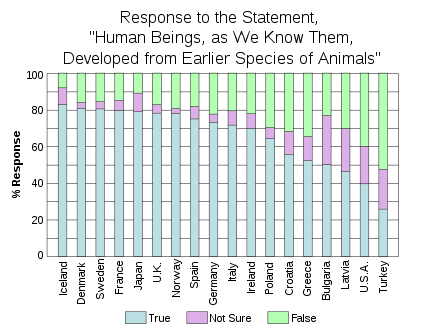
Views on human evolution in various countries.
[175][176]
Most vocal
literalist creationists are from the United States, and strict
creationist views are much less common in other developed countries.
According to a study published in Science,
a survey of the United States, Turkey, Japan and Europe showed that
public acceptance of evolution is most prevalent in Iceland, Denmark and
Sweden at 80% of the population.[101]
Australia
A 2009 Nielsen
poll showed that almost a quarter of Australians believe "the biblical
account of human origins" rather than the Darwinian account. Forty-two
percent believe in a "wholly scientific" explanation for the origins of
life, while 32 percent believe in an evolutionary process "guided by
God".[177]
Canada
A 2008 Canadian
poll revealed that "58 percent accept evolution, while 22 percent think
that God created humans in their present form within the last 10,000
years."[178]
Europe
In Europe,
literalist creationism is more widely rejected, though regular opinion
polls are not available. Most people accept that evolution is the most
widely accepted scientific theory as taught in most schools. In
countries with a Roman
Catholic majority, papal
acceptance of evolutionary creationismas worthy of study has
essentially ended debate on the matter for many people.
In the United
Kingdom, a 2006 poll on the "origin and development of life" asked
participants to choose between three different perspectives on the
origin of life: 22% chose creationism, 17% opted for intelligent design,
48% selected evolutionary theory, and the rest did not know.[179][180] A
subsequent 2010 YouGov poll
on the correct explanation for the Origin of Humans found that 9% opted
for creationism, 12% intelligent design, 65% evolutionary theory and 13%
didn't know.[62] The
former Archbishop of Canterbury Rowan
Williams, head of the worldwide Anglican
Communion, views the idea of teaching creationism in schools as a
mistake.[181]
In Italy, prime
minister Silvio
Berlusconi wanted to
retire evolution from schools in the middle level; after one week of
massive protests, he reversed his opinion.[182]
There continues
to be scattered and possibly mounting efforts on the part of religious
groups throughout Europe to introduce creationism into public education.[183] In
response, the Parliamentary Assembly of the Council
of Europe has released a
draft report entitled The
dangers of creationism in education on
June 8, 2007,[184] reinforced
by a further proposal of banning it in schools dated October 4, 2007.[185]
Serbia suspended the
teaching of evolution for one week in September 2004, under education
minister Ljiljana
Čolić, only allowing schools to reintroduce evolution into the
curriculum if they also taught creationism.[186] "After
a deluge of protest from scientists, teachers and opposition parties"
says the BBC report, Čolić's deputy made the statement, "I have come
here to confirm Charles Darwin is still alive" and announced that the
decision was reversed.[187] Čolić
resigned after the government said that she had caused "problems that
had started to reflect on the work of the entire government."[188]
Poland saw a major
controversy over creationism in 2006 when the deputy education minister, Mirosław
Orzechowski, denounced evolution as "one of many lies" taught in
Polish schools. His superior, Minister of Education Roman
Giertych, has stated that the theory of evolution would continue to
be taught in Polish schools, "as long as most scientists in our country
say that it is the right theory." Giertych's father, Member
of the European Parliament Maciej
Giertych, has opposed the teaching of evolution and has claimed that dinosaurs and
humans co-existed.[189]
United States
According to a
2001 Gallup
poll,[190] about
45% of Americans believe that "God created human beings pretty much in
their present form at one time within the last 10,000 years or so."
Another 37% believe that "human beings have developed over millions of
years from less advanced forms of life, but God guided this process",[191] and
14% believe that "human beings have developed over millions of years
from less advanced forms of life, but God had no part in this process".[190]
Belief in
creationism is inversely correlated to education; of those with postgraduate
degrees, 74% accept evolution.[192][193] In
1987, Newsweek reported:
"By one count there are some 700 scientists with respectable academic
credentials (out of a total of 480,000 U.S. earth and life scientists)
who give credence to creation-science, the general theory that complex
life forms did not evolve but appeared 'abruptly.'"[194][195]
A 2000 poll for People
for the American Way found
70% of the United
States public felt that
evolution was compatible with a belief in God.[196]
According to a
study published in Science,
between 1985 and 2005 the number of adult North Americans who accept
evolution declined from 45% to 40%, the number of adults who reject
evolution declined from 48% to 39% and the number of people who were
unsure increased from 7% to 21%. Besides the United States the study
also compared data from 32 European countries, Turkey, and Japan. The
only country where acceptance of evolution was lower than in the United
States was Turkey (25%).[101]
According to a
2011 Fox News poll, 45% of Americans believe in Creationism, down from
50% in a similar poll in 1999.[197] 21%
believe in 'the theory of evolution as outlined by Darwin and other
scientists' (up from 15% in 1999), and 27% answered that both are true
(up from 26% in 1999).[197]
In September
2012, educator and television personality Bill
Nye of Bill
Nye the Science Guy fame
spoke with the Associated Press and aired his fears about acceptance of
creationist theory, believing that teaching children that creationism is
the only true answer and without letting them understand the way science
works will prevent any future innovation in the world of science.[29][30](video)
Education
controversies

The Truth fish, one of the many creationist responses to the
Darwin
fish.
In the United
States, creationism has become centered in the political controversy over creation
and evolution in public education, and whether teaching creationism
in science classes conflicts with the separation
of church and state. Currently, the controversy comes in the form of
whether advocates of the Intelligent
Design movement who wish
to "Teach
the Controversy" in science classes have conflated science
with religion.[153]
People for the American Way polled
1500 North Americans about the teaching of evolution and creationism in
November and December 1999. They found that most North Americans were
not familiar with Creationism, and most North Americans had heard of
evolution, but many did not fully understand the basics of the theory.
The main findings were:
| Americans believe that:[196] |
|
|
|
|
|
|
Public schools should teach evolution only |
|
20% |
|
Only evolution should be taught in science classes,
religious explanations can be discussed in another class |
|
17% |
|
Creationism can be discussed in science class as a 'belief,'
not a scientific theory |
|
29% |
|
Creationism and evolution should be taught as 'scientific
theories' in science class |
|
13% |
|
Only Creationism should be taught |
|
16% |
|
Teach both evolution and Creationism, but unsure how to do
so |
|
4% |
|
No opinion |
|
1% |
In such
political contexts, creationists argue that their particular religiously
based origin belief is superior to those of other belief
systems, in particular those made through secular or scientific
rationale. Political creationists are opposed by many individuals and
organizations who have made detailed critiques and given testimony in
various court cases that the alternatives
to scientific reasoning offered by creationists are
opposed by the consensusof
the scientific
community.[198][199]
Criticism
Christian criticism
Many Christians
disagree with the teaching of creationism. Several religious
organizations, among them the Catholic
Church, hold that their faith does not conflict with the scientific
consensus regarding evolution.[200] The Clergy
Letter Project, which has collected more than 13,000 signatures, is
an "endeavor designed to demonstrate that religion and science can be
compatible".
In his 2002
article "Intelligent Design as a Theological Problem", George Murphy
argues against the view that life
on Earth, in all its forms, is direct evidence of God's act of
creation (Murphy quotes Phillip Johnson's claim that he is speaking "of
a God who acted openly and left his fingerprints on all the evidence.").
Murphy argues that this view of God is incompatible with the Christian
understanding of God as "the one revealed in the cross and resurrection
of Jesus."
The basis of this theology is Isaiah 45:15,
"Truly, thou art a God who hidest thyself, O God of Israel, the Savior."
Murphy observes
that the execution of a Jewish carpenter by Roman authorities is in and
of itself an ordinary event and did not require Divine action. On the
contrary, for the crucifixion to occur, God had to limit or "empty"
Himself. It was for this reason that Paul wrote, in Philippians 2:5-8,
-
Have this mind among yourselves, which is yours in Christ Jesus,
who, though he was in the form of God, did not count equality with
God a thing to be grasped, but emptied himself, taking the form of a
servant, being born in the likeness of men. And being found in human
form he humbled himself and became obedient unto death, even death
on a cross.
Murphy concludes
that,
Just as the
son of God limited himself by taking human form and dying on the
cross, God limits divine action in the world to be in accord with
rational laws God has chosen. This enables us to understand the
world on its own terms, but it also means that natural processes
hide God from scientific observation.
For Murphy, a
theology of the cross requires that Christians accept a methodological naturalism,
meaning that one cannot invoke God to explain natural phenomena, while
recognizing that such acceptance does not require one to accept a metaphysical naturalism,
which proposes that nature is all that there is.[201]
Teaching of
creationism
Other Christians
have expressed qualms about teaching creationism. In March 2006, then
Archbishop of Canterbury Rowan
Williams, the leader of the world's Anglicans, stated his discomfort
about teaching creationism, saying that creationism was "a kind of category
mistake, as if the Bible were a theory like other theories". He also
said: "My worry is creationism can end up reducing the doctrine of
creation rather than enhancing it." The views of the Episcopal
Church - a major
American-based branch of the Anglican
Communion - on teaching
creationism resemble those of Williams.[202]
In April 2010
the American
Academy of Religion issued Guidelines
for Teaching About Religion in K‐12 Public Schools in the United States which
included guidance that creation
science or intelligent
design should not be
taught in science classes, as "Creation science and intelligent design
represent worldviews that fall outside of the realm of science that is
defined as (and limited to) a method of inquiry based on gathering
observable and measurable evidence subject to specific principles of
reasoning." However, they, as well as other "worldviews that focus on
speculation regarding the origins of life represent another important
and relevant form of human inquiry that is appropriately studied in
literature or social sciences courses. Such study, however, must include
a diversity of worldviews representing a variety of religious and
philosophical perspectives and must avoid privileging one view as more
legitimate than others."[203]
Moore and
Cotner, from the biology program at the University of Minnesota, reflect
on the relevance of teaching creationism in the article The
Creationist Down the Hall: Does It Matter When Teachers Teach
Creationism? They
conclude that "despite decades of science education reform, numerous
legal decisions declaring the teaching of creationism in public-school
science classes to be unconstitutional, overwhelming evidence supporting
evolution, and the many denunciations of creationism as nonscientific by
professional scientific societies, creationism remains popular
throughout the United States."[204]
Scientific criticism
Science is a
system of knowledge based on observation, empirical evidence and
testable explanations and predictions of natural phenomena. By contrast,
creationism is based on literal interpretations of the narratives of
particular religious texts. Some creationist beliefs involve purported
forces that lie outside of nature, such as supernatural intervention,
and often do not allow predictions at all. Therefore, these can neither
be confirmed nor disproved by scientists.[205] However,
many creationist beliefs can be framed as testable predictions about
phenomena such as the age
of the Earth, its geological
history and the origins, distributions and relationships of
living organisms found on it. Early
science incorporated
elements of these beliefs, but as science developed these beliefs were
gradually falsified and
were replaced with understandings based on accumulated and reproducible
evidence that often allows the accurate prediction of future results.[206][207] Some
scientists, such as Stephen
Jay Gould,[208] consider
science and religion to be two compatible and complementary fields, with
authorities in distinct areas of human experience, so-called non-overlapping
magisteria.[209] This
view is also held by many theologians, who believe that ultimate
origins and meaning are
addressed by religion, but favour verifiable scientific explanations of
natural phenomena over those of creationist beliefs. Other scientists,
such as Richard
Dawkins,[210] reject
the non-overlapping magisteria and argue that, in disproving literal
interpretations of creationists, the scientific method also undermines
religious texts as a source of truth. Irrespective of this diversity in
viewpoints, since creationist beliefs are not supported by empirical
evidence, the scientific
consensus is that any
attempt to teach creationism as science should be rejected.[211][212][213]
Organizations
|
Creationism (in general)
Young
Earth Creationism
Old
Earth Creationism
- Reasons To Believe led by Hugh
Ross
- Answers In Creation led by
Greg Neyman[214]
|
|
Intelligent design
Evolutionary creationism
Evolution
|
See also
Notes on terminology
-
Jump up^ While
the term myth is
often used colloquially to refer to "a false story", this
article uses the term in the academic meaning of "a sacred
narrative explaining how the world and mankind came to be in
their present form" (Dundes A, 1996. "Madness in method plus a
plea for projective inversion in myth". In LL Patton & W Doniger
(Eds.), Myth
& method. Charlottesville: University Press of Virginia
pp. 147-162).
Notes
-
Jump up^ Ronald
L. Numbers. "The
‘Ordinary’ View of Creation". Counterbalance Meta-Library.
Retrieved 2010-08-11.
-
Jump up^ Johnson,
Phillip E.; Lamoureux, Denis Oswald (1 June 1999). The
Johnson-Lamoureux Debate on Biological Origins. Regent
College Publishing. ISBN 1573831336.
Retrieved 10 November 2012.
-
Jump up^ Rainey,
David (30 July 2008). A
Selective Guide to Christian Nonfiction. ABC-CLIO. ISBN 1591588472.
"Thus, there is diversity within the Christian community, and a
continuum of ideas that begins with young earth creationists.
There are four main Christian schools of thought: young-earth
creation science, old-earth creation science, intelligent
design, and theistic evolution."
-
^ Jump
up to:a b c d Ronald
L. Numbers. "Antievolutionists
and Creationists".Creationism History. Counterbalance
Meta-Library. Retrieved
2007-08-15.
-
Jump up^ "A
Spectrum of Creation Views held by Evangelicals". American
Scientific Affiliation.
Retrieved 2007–10–18. "All Christians in the sciences
affirm the central role of the Logos in creating and maintaining
the universe. In seeking to describe how the incredible universe
has come to be, a variety of views has emerged in the last two
hundred years as continuing biblical and scientific scholarship
have enabled deeper understanding of God's word and world."
-
Jump up^ Ronald
L. Numbers (1998). Darwinism
Comes to America. Harvard
University Press. ISBN 978-0-674-19312-3.
Retrieved 2007–10–18. "Creationists of today are not in
agreement concerning what was created according to Genesis."
-
^ Jump
up to:a b "NCSE :
National Center for Science Education - Defending the Teaching
of Evolution in Public Schools.". Creationism.
2008. Retrieved 2009-06-22.
-
Jump up^ For
example, the Scopes
Trial of 1925
brought creationism and evolution into the adversarial
environment of the American justice system. The trial was
well-publicized, and served as a catalyst for the wider
creation–evolution controversy; Giberson & Yerxa (2002), pp.
3-4.
-
Jump up^ Evolution's
status as a "theory" has played a prominent role in the
creation–evolution controversy. In scientific terminology,
"theories are structures of ideas that explain and interpret
facts". Evolutionists utilise this definition to characterise
evolution as a scientific
fact and a theory.In contrast, creationists use the term
"theory" to characterize evolution as an "imperfect fact,"
drawing upon the vernacular conception
of "theory" as "part of a hierarchy of confidence running
downhill from fact to theory to hypothesis to guess"; Gould
SJ (May 1981). Evolution
as fact and theory. Retrieved 12 April 2010; Moran L
(2002). Evolution
is a fact and a theory. Retrieved 12 April 2010.
Original work published 1993.
-
^ Jump
up to:a b Campbell
D (2006, 21 February). "Academics
fight rise of creationism at universities". The
Guardian. Retrieved 07 April, 2010.
-
Jump up^ For
the biological understanding of complexity, see Evolution
of complexity. For a creationist perspective, see Irreducible
complexity.
-
Jump up^ Ronald
L. Numbers. "Creationism
History: Topic Index". Counterbalance Meta-Library.
Retrieved 2009-06-22.
-
Jump up^ Dundes,
Alan (Winter, 1997). "Binary Opposition in Myth: The
Propp/Levi-Strauss Debate in Retrospect". Western
Folklore (56):
39–50.
-
Jump up^ Dundes,
Alan (1984). Introduction.
Sacred Narrative: Readings in the Theory of Myth. Ed. Alan Dunes.
University of California Press.
-
Jump up^ Dundes,
Alan (1996). "Madness
in Method Plus a Plea for Projective Inversion in Myth". Myth
and Method. Ed. Laurie Patton and Wendy Doniger.
Charlottesville: University of Virginia Press.
-
Jump up^ Wallace,
T. (2007). "Five
Major Evolutionist Misconceptions about Evolution". The
True Origin Archive. TrueOrigin
Archive. Retrieved
2011–04-25.
-
Jump up^ Isaak,
Mark (2005). "CA215:
Practical uses of evolution.". Index
to Creationist Claims. TalkOrigins
Archive. Retrieved
2009–08-20.
Isaak,
Mark (2005). "CH100.1:
Science in light of Scripture". Index
to Creationist Claims. TalkOrigins
Archive. Retrieved
2009–08-20.
-
Jump up^ Isaak,
Mark (2004). "CA301:
Science and naturalism". Index
to Creationist Claims. TalkOrigins
Archive. Retrieved
2009–08-20.
-
Jump up^ "Statements
from Scientific and Scholarly Organizations". National
Center for Science Education.
Retrieved 2008-08-28.
-
Jump up^ "Royal
Society statement on evolution, creationism and intelligent
design". Royalsoc.ac.uk.
Retrieved 2011-03-10.
-
Jump up^ National
Association of Biology Teachers Statement
on Teaching Evolution
-
Jump up^ IAP
Statement on the Teaching of Evolution Joint
statement issued by the national science academies of 67
countries, including the United
Kingdom's Royal
Society (PDF
file)
-
Jump up^ From
the American
Association for the Advancement of Science, the world's
largest general scientific society: 2006
Statement on the Teaching of Evolution PDF (44.8 KB), AAAS
Denounces Anti-Evolution Laws
-
Jump up^ Francis
Collins (17 July 2007). The
Language of God. Simon & Schuster. ISBN 9780743293570.
Retrieved 24 April 2012. "This view is entirely
compatible with everything that science teachings us about the
natural world."
-
Jump up^ Greg
Neyman (2011). "Theistic
Evolution". Answers in Creation.
Retrieved 24 April 2012. "Theistic Evolution is the old
earth creationist belief that God used the process of evolution
to create life on earth. The modern scientific understanding of
biological evolution is considered to be compatible with the
Bible."
-
Jump up^ Oxford
English Dictionary.
-
^ Jump
up to:a b c "Creationism"
Contributed By: Ronald L. Numbers, William Coleman: Microsoft
Encarta Online Encyclopedia 2007. Archived2009-10-31.
-
^ Jump
up to:a b c d e Creationism/ID,
A Short Legal History By
Lenny Flank, Talk Reason
-
^ Jump
up to:a b Luvan,
Dylan (September 24. 2012). "Bill
Nye Warns: Creation Views Threaten U.S. Science". AP
News. Retrieved September
24, 2012.
-
^ Jump
up to:a b Fowler,
Jonathan; Rodd, Elizabeth (August 23, 2012). "Bill
Nye: Creationism Is Not Appropriate For Children". YouTube.
Retrieved September 24, 2012.
-
Jump up^ The
Works of Philo Judaeus, translated from the Greek by Charles
Duke Yonge:
Philo: Allegorical Interpretation, I
-
^ Jump
up to:a b c d e f g Forster,
Roger; Marston, Dr Paul (2001). "Chapter 7 - Genesis Through
History". Reason
Science and Faith. Chester, England: Monarch Books. ISBN 1-85424-441-8.
-
Jump up^ Davis
A. Young (1988). "The
contemporary relevance of Augustine".Perspectives on
Science and Christian Faith.
Retrieved 2008-08-18.
-
Jump up^ Moore,
James. "Evolution
and Wonder - Understanding Charles Darwin". Speaking
of Faith (Radio Program). American Public Media.
Retrieved 2007-06-27.
-
^ Jump
up to:a b History
of the Collapse of "Flood Geology" and a Young Earth,
adapted from The
Biblical Flood: A Case Study of the Church's Response to
Extrabiblical Evidence (Eerdmans,
1995) by Davis A. Young. Retrieved 2007-06-30.
-
Jump up^ Desmond,
Adrian; Moore,
James (1991). Darwin.
London: Michael Joseph, Penguin Group. ISBN 0-7181-3430-3.
-
Jump up^ "Letter
1919 — Darwin, C. R. to Hooker, J. D., 5 (July 1856)".
Darwin Correspondence Project.
Retrieved 2010-08-11.
"Letter 4196 — Darwin, C. R. to Gray, Asa, 31 May (1863)".
Darwin Correspondence Project.
Retrieved 2010-08-11.
-
Jump up^ "Letter
4041 — Lyell, Charles to Darwin, C. R., 15 March 1863".
Darwin Correspondence Project.
Retrieved 2010-08-11.
-
^ Jump
up to:a b Pitock,
Todd (June 2007). "Science and Islam". Discover:
36–45.
-
^ Jump
up to:a b Gregory
Katz (2008-02-16). "Clash
Over Creationism Is Evolving In Europe's Schools".
Associated Press. Retrieved
2008-02-17./
-
^ Jump
up to:a b c Taner
Edis. "Cloning
Creationism in Turkey". RNCSE
19 (6): 30-35. National Center for Science Education.
Retrieved 2008-02-17.
-
Jump up^ "Serbia
reverses Darwin suspension". BBC. 2004-09-09.
Retrieved 2008-02-17.
-
Jump up^ Roger
Highfield (2007-02-10). "Creationists
rewrite natural history". London: The Telegraph. Archived
from the
original on
2007-10-08. Retrieved
2008-02-17.
-
Jump up^ Resolution
1580 (2007) The dangers of creationism in educationParliamentary
Assembly of the Council of Europe, paras. 13, 18
-
Jump up^ A.E.
Wilder-Smith, Die Naturwissenschaften kennen keine Evolution,
1978, Schwabe Verlag, Basel.
-
Jump up^ Factum.
"Schwengeler Verlag, Postfach 263, CH-9435 Heerbrugg."
-
Jump up^ "Hessische
Schulen: "Kultusministerin fällt auf Kreationisten herein" -
SPIEGEL ONLINE - Nachrichten - SchulSPIEGEL". Spiegel.de.
Retrieved 2011-11-08.
-
Jump up^ "German
Scientists Concerned About Rise in Creationist Belief | Germany
| Deutsche Welle | 02.11.2006". Dw-world.de.
Retrieved 2010-10-29.
-
Jump up^ "Contesting
Evolution: European Creationists Take On Darwin - SPIEGEL ONLINE
- News - International". Spiegel.de.
Retrieved 2010-10-29.
-
Jump up^ "Carte
creaţionistă pentru biologie, avizată de minister". Evz.ro.
March 20, 2009.
-
Jump up^ by
John and Svetlana Doughty. "Creationism
in Russia". Icr.org.
Retrieved 2011-11-08.
-
Jump up^ The
creationists: from scientific creationism to intelligent design
(Ronald L. Numbers)
-
Jump up^ "Peter
C Kjaergaard - Western front". New Humanist.
Retrieved 2010-10-29.
-
Jump up^ Bigg,
Claire (2006-03-10). "Russia:
Creationism Finds Support Among Young - Radio Free Europe /
Radio Liberty © 2010". Rferl.org.
Retrieved 2010-10-29.
-
Jump up^ "Science
and Engineering Indicators 2006 - Figure 7-7: Correct answers to
specific literacy questions, by country/region: Most recent year
- US National Science Foundation (NSF)". nsf.gov. 2006-02-23.
Retrieved 2010-10-29.
-
^ Jump
up to:a b http://www.britishcouncil.org/darwin_now_survey_global.pdf
-
Jump up^ Harry
de Quetteville (2004-09-09). "Darwin
is off the curriculum for Serbian schools". The
Daily Telegraph (London).
Retrieved 24 January 2012.
-
Jump up^ Thomas
Stephens (October 9, 2006). "Swiss
drag knuckles accepting evolution". swissinfo.ch.
Retrieved December 4, 2011.
-
Jump up^ Dale
Bechtel (November 28, 2007). "Creationism
controversy evolves". swissinfo.ch.
Retrieved December 4, 2011.
-
Jump up^ "Who
are the British creationists?". BBC
News. 2008-09-15.
-
Jump up^ "Americans
are creationists; Britons and Canadians side with evolution.". Angus
Reid Public Opinion. 2010-07-15.
Retrieved 2012-06-02. "Poll question: ...whether
their own point of view is closest to the notion that human
beings evolved from less advanced life forms over millions of
years, or the idea that God created human beings in their
present form within the last 10,000 years. Results
(Britain): Human beings evolved from less advanced life
forms over millions of years (68%); God created human beings in
their present form within the last 10,000 years (16%); Not sure
(15%)"
-
^ Jump
up to:a b /
Prospect Survey Results YouGov.co.uk.
-
Jump up^ Wynne-Jones,
Jonathan (2009-01-31). "Poll
reveals public doubts over Charles Darwin's theory of evolution". The
Daily Telegraph(London).
-
Jump up^ "Call
for creationism in science". BBC
News. 2008-09-13.
-
Jump up^ "Four
out of five Britons do not believe in creationism". The
Daily Telegraph (London).
2009-03-02.
-
Jump up^ "Who
are the British creationists?". BBC. 2008-09-15.
-
Jump up^ Hameed,
S (2008). "Bracing for Islamic creationism". Science 322(5908):
1637–8. doi:10.1126/science.1163672. PMID 19074331.
-
^ Jump
up to:a b c Bennett,
Drake (2009-10-25). "Islam's
Darwin problem". The
Boston Globe.
-
Jump up^ "Evolution
and religion: In the beginning". The Economist. 2007-04-19.
Retrieved 2007-04-25.This
article gives a worldwide overview of recent developments on the
subject of the controversy.
-
Jump up^ Salter,
Jessica (2008-09-19). "Richard
Dawkins website banned in Turkey". The
Daily Telegraph (London).
-
Jump up^ "RD.net
no longer banned in Turkey! - RDFRS UK - www.richarddawkins.net".
RichardDawkins.net. 2011-07-08.
Retrieved 2011-11-08.
-
Jump up^ Alison
Abbott (Turkish scientists claim Darwin censorship). "Turkish
scientists claim Darwin censorship". Nature.
-
Jump up^ "Turkey
censors evolution". Nature.
19 March 2009.
-
Jump up^ "Evolution
Stirs Tempest in Turkish Teapot". APS
News. American Physical Society. May 2009.
-
Jump up^ Daniel
Steinvorth (March 17, 2009). "Darwin
in Turkey: 'Most Express Sympathy for the Censorship'". Spiegel
Online.
-
Jump up^ Tom
Chivers (December 10, 2011). "Darwin
censored by the Turkish government's porn filter". Telegraph
Blogs.
-
Jump up^ "A
Brief History Of Answers in Genesis–USA". AnswersOnline.
Archived from the
original on
2000-08-16.
-
Jump up^ "Ken
Ham: Biblical Literalist". Pbs.org. 2001.
Retrieved December 17, 2008.
-
Jump up^ "Answers
Research Journal - Creation, Evolution, Scientific Research -
Answers Research Journal". Answersingenesis.org.
Retrieved 2010-10-29.
-
Jump up^ "Dr
Jason Lisle". Creation.com. 2004-08-11.
Retrieved 2010-10-29.
-
Jump up^ "Dr
Jonathan Sarfati". Creation.com.
Retrieved 2010-10-29.
-
Jump up^ "Dr
Tasman Bruce Walker". Creation.com. 1999-01-18.
Retrieved 2010-10-29.
-
Jump up^ "CREATIONISM
and intelligent design will be taught in Queensland state
schools for the first time as part of the new national
curriculum". Couriermail.com.au.
-
Jump up^ "Dr
Pierre Gunnar Jerlstrom". Creation.com.
Retrieved 2010-10-29.
-
Jump up^ "Skeptic
Mag Hotline - EVOLUTION V. CREATION DOWN UNDER".
Skeptictank.org. 1998-12-12.
Retrieved 2010-10-29.
-
Jump up^ Plimer,
Ian "Telling lies
for God- Reason versus Creationism," (Random House)
-
Jump up^ Ian
Plimer. "Skeptic
Mag Hotline - EVOLUTION V. CREATION DOWN UNDER". skeptictank.org.
Retrieved 2008-02-05.
-
Jump up^ "Telling
Lies for God? - One Man's Crusade". Abc.net.au.
Retrieved 2010-10-29.
-
^ Jump
up to:a b by
Chon-Ho Hyon. "The
Creation Science Movement in Korea". Icr.org.
Retrieved 2010-10-29.
-
Jump up^ "한국창조과학회".
Creation.or.kr. Retrieved
2010-10-29.
-
Jump up^ jobs
(2012-06-05). "South
Korea surrenders to creationist demands : Nature News & Comment".
Nature.com. Retrieved
2012-07-03.
-
Jump up^ "Creationist
success in South Korea?". NCSE.
Retrieved 2012-07-03.
-
Jump up^ jobs
(2012-09-06). "Science
wins over creationism in South Korea : Nature News & Comment".
Nature.com. Retrieved
2013-06-18.
-
Jump up^ The
Creationists: From Scientific Creationism to Intelligent Design
(Ronald L. Numbers). Harvard University Press (November 30,
2006)
-
Jump up^ s:Kitzmiller
v. Dover Area School District/2:Context#Page 19 of 139
-
^ Jump
up to:a b c d e f Understanding
the Intelligent Design Creationist Movement: Its True Nature and
Goals. PDF (413 KB) A
Position Paper from the Center for Inquiry, Office of Public
Policy Barbara Forrest. May, 2007.
-
Jump up^ TalkOrigins
Archive: Post of the Month: March 2006, The History of
Creationism by Lenny Flank.
-
^ Jump
up to:a b c McLean
v. Arkansas Board of Education, Decision January 5, 1982.
-
Jump up^ "Edwards
v. Aguillard". Talkorigins.org.
Retrieved 2011-03-10.
-
Jump up^ Evolution
News & Views: Dover Judge Regurgitates Mythological History of
Intelligent Design, Discovery
Institute, Posted by Jonathan Witt on December 20, 2005 4:43
PM. Retrieved 2007-07-01
-
^ Jump
up to:a b c d e f Miller
JD, Scott EC, Okamoto S (August 2006). "Science
communication. Public acceptance of evolution". Science 313 (5788):
765–6. doi:10.1126/science.1126746. PMID 16902112.
-
^ Jump
up to:a b c d Newport,
Frank (December 17, 2010). "Four
in 10 Americans Believe in Strict Creationism". Gallup.
-
Jump up^ Heddy,
B.C.; Nadelson, L.S. (2013). "The
variables related to public acceptance of evolution in the
United States". Evolution:
Education and Outreach 6 (3):
1–14. doi:10.1186/1936-6434-6-3.
Retrieved 28 March 2013.
-
Jump up^ "Denominational
Views". National
Center for Science Education. October 17, 2008.
Retrieved 2010-05-17.
-
Jump up^ "Episcopal
Church, General Convention (2006)". National Center for
Science Education. Retrieved
2010-05-17.
-
Jump up^ Edwin
A. Schick (1965). "Lutheran
World Federation". "Evolution",
in The Encyclopedia of the Lutheran Church. National Center
for Science Education.
Retrieved 2010-05-17.
Allen
R. Utke; Patrick Russell (October 2006). "'God
allows the universe to create itself and evolve'". The
Lutheran. Retrieved
2010-05-17. "The Lutheran is the magazine of the Evangelical
Lutheran Church in America"
-
Jump up^ "Archbishop
of Canterbury, Transcript of interview with the Guardian".
Archbishopofcanterbury.org. 2006-03-21.
Retrieved 2011-03-10.
-
Jump up^ Williams,
Chris (2006-03-21). "''Archbishop
of Canterbury backs evolution: Well, he is a Primate,'' Chris
Williams, The Register, Tuesday 21 March 2006".
Theregister.co.uk. Retrieved
2011-03-10.
-
Jump up^ What
Catholics Think of Evolution? They don't not believe in it,
Keelin McDonell, Explainer, Slate
Magazine, July 12, 2005.
-
Jump up^ See
also the article Evolution
and the Roman Catholic Church.
-
Jump up^ see
e.g. John
Polkinghorne's Science
and Theology pp6-7
-
Jump up^ Bradshaw,
Rob. "Philo
of Alexandria (c.20 BC - c. AD 50)". Early Church.org.uk.
Retrieved 21 December 2011.
-
Jump up^ "The
Works of Philo Judaeus, Chapter 2, translated by Charles Duke
Yonge". Earlychristianwritings.com. 2006-02-02.
Retrieved 2011-03-10.
-
Jump up^ ASA3.org,
Davis A. Young, "The Contemporary Relevance of Augustine's View
of Creation" (From: Perspectives on Science and Christian Faith
40.1:42-45 (3/1988)), The American Scientific Affiliation
-
Jump up^ Pius
XII. "Humani
Generis". Vatican.va.
Retrieved 2011-11-08.
-
Jump up^ "Catholic
Information Network, "Question of Evolution." October 22, 1996".
Cin.org. Retrieved 2011-11-08.
-
Jump up^ "Pugh
Forum findings Page 95" (PDF).
Retrieved 2011-03-10.
-
Jump up^ Wayne
Jackson. "Are
There Two Creation Accounts in Genesis?".
Retrieved 2007-05-23.
-
Jump up^ "The
Creation Myths: Internal Difficulties". Archived from the
original on
2008-07-15. Retrieved
2007-05-23.
-
Jump up^ Eddy,
Mary Baker (1934 [1875]). Science
and Health with Key to the Scriptures. United States of
America: The Christian Science Board of Directors. p. 547.
-
Jump up^ Science
& Religion: A New Introduction, Alister E. McGrath, 2009, p. 140
-
Jump up^ The
creationists: from scientific creationism to intelligent design,
Ronald L. Numbers, 2006, p. 420
-
Jump up^ James
C. Carper, Thomas C. Hunt, The Praeger Handbook of Religion and
Education in the United States: A-L, 2009, p. 167
-
Jump up^ A
history of Indian philosophy, Volume 1, Surendranath Dasgupta,
1992, p. 10
-
Jump up^ Papineau,
David (2004-01-07). "Creationism:
Science and Faith in Schools". Guardian (London).
Retrieved 2008-07-18.
-
Jump up^ Bennett
2009
-
Jump up^ Green,
Toby (29 September 2008). "Creationist
offers prize for fossil proof of evolution". London: The
Independent. Retrieved
2007-05-17.
-
Jump up^ "Templeton-Cambridge.org".
Templeton-Cambridge.org.
Retrieved 2011-03-10.
-
Jump up^ Harun
Yahya, The
Big Bang Echoes through the Map of the Galaxy
-
Jump up^ Maurice
Bucaille (1990), The
Bible the Qur'an and Science, "The Quran and Modern
Science", ISBN
81-7101-132-2.
-
Jump up^ A.
Abd-Allah, The
Qur'an, Knowledge, and Science, University
of Southern California.
-
Jump up^ "Jesus
and the Indian Messiah 13.Every Wind of Doctrine". Into
The Light. Archived from the
original on
2007-10-09.
-
Jump up^ "Internet
Archive Wayback Machine". Replay.waybackmachine.org.
2009-01-30. Retrieved
2011-11-08.
-
Jump up^http://www.alislam.org/library/articles/Guided_evolution_and_punctuated_equilibrium-20081104MN.pdf
-
Jump up^ Aviezer,
Nathan. In the Beginning: Biblical Creation and Science. Ktav,
1990. Hardcover. ISBN
0-88125-328-6
-
Jump up^ Carmell,
Aryeh and Domb, Cyril, eds. Challenge:
Torah Views on Science New
York: Association of Orthodox Jewish Scientists/Feldheim
Publishers, 1976. ISBN
0-87306-174-8
-
Jump up^ Schroeder,
Gerald L. The
Science of God: The Convergence of Scientific and Biblical
Wisdom Broadway
Books, 1998, ISBN
0-7679-0303-X
-
Jump up^ Jeffrey
H. Tigay, Genesis,
Science, and "Scientific Creationism", Conservative Judaism,
Vol. 40(2), Winter 1987/1988, p.20-27, TheRabbinical
Assembly
-
Jump up^ Effendi
1912, p. 220
-
Jump up^ The
Creation/Evolution Continuum, Eugenie
Scott, NCSE Reports,
v. 19, n. 4, p. 16-17, 23-25, July/August, 1999.
-
^ Jump
up to:a b Wise,
D.U., 2001, Creationism's Propaganda Assault on Deep Time and
Evolution, Journal of Geoscience Education, v. 49, n. 1, p.
30-35.
-
^ Jump
up to:a b Who
Believes What? Clearing up Confusion over Intelligent Design and
Young-Earth Creationism, Marcus R. Ross, Journal of
Geoscience Education, v. 53, n. 3, May, 2005, p. 319-323
-
Jump up^ "The
Holy Bible, King James Version".
Retrieved 2006-12-31.
-
Jump up^ "Top
Questions-1.What is the theory of intelligent design?".Discovery
Institute. Retrieved
2007-05-13.
-
Jump up^ Kitzmiller
v. Dover Testimony, Barbara
Forrest, 2005.
-
Jump up^ Wedge
Strategy, Discovery Institute, 1999.
-
Jump up^ "for
most members of the mainstream scientific community, ID is not a
scientific theory, but a creationist pseudoscience." Trojan
Horse or Legitimate Science: Deconstructing the Debate over
Intelligent Design, David Mu, Harvard Science Review,
Volume 19, Issue 1, Fall 2005.
"Creationists are repackaging their message as the pseudoscience
of intelligent design theory." Professional
Ethics Report, American Association for the Advancement
of Science, 2001.
Conclusion of Kitzmiller v. Dover Area School District Ruling
-
Jump up^ The
Creationists: From Scientific Creationism to Intelligent Design,
Expanded Edition, Ronald
L. Numbers, Harvard
University Press,Cambridge,
Massachusetts, November 30, 2006, ISBN
0-674-02339-0.
-
Jump up^ Forrest,
Barbara (May,2007). Understanding
the Intelligent Design Creationist Movement: Its True Nature and
Goals. A Position Paper from the Center for Inquiry, Office of
Public Policy (PDF). Washington,
D.C.: Center
for Inquiry, Inc.
Retrieved 2007-08-22. ; Forrest,
B.C. and Gross,
P.R., 2003, Evolution
and the Wedge of Intelligent Design: The Trojan Horse Strategy, Oxford, Oxford
University Press, 224 p., ISBN
0-19-515742-7
-
Jump up^ "Dembski
chides me for never using the term "intelligent design" without
conjoining it to "creationism." He implies (though never
explicitly asserts) that he and others in his movement are not
creationists and that it is incorrect to discuss them in such
terms, suggesting that doing so is merely a rhetorical ploy to
"rally the troops". (2) Am I (and the many others who see
Dembski's movement in the same way) misrepresenting their
position? The basic notion of creationism is the rejection of
biological evolution in favor of special creation, where the
latter is understood to be supernatural. Beyond this there is
considerable variability...", from Wizards
of ID: Reply to Dembski, Robert T. Pennock, p. 645-667
of Intelligent
Design Creationism and Its Critics: Philosophical, Theological,
and Scientific Perspectives, Robert T. Pennock (editor), Cambridge, MIT
Press, 2001, 825 p., ISBN
0-262-66124-1; Pennock, R.T., 1999, Tower
of Babel: Evidence Against the New Creationism, Cambridge, MIT
Press, 440 p.
-
Jump up^ The
Creation/Evolution Continuum, Eugenie
Scott, NCSE Reports,
v. 19, n. 4, p. 16-17, 23-25, July/August, 1999.; Scott,
E.C., 2004,Evolution vs. Creationism: An Introduction,
Westport, Greenwood Press, 296p, ISBN
0-520-24650-0
-
Jump up^ Intelligent
design not science: experts, Deborah Smith Science
Editor, Sydney
Morning Herald, October 21, 2005.
-
^ Jump
up to:a b Full
text of Judge Jones' ruling, dated December 20, 2005
-
Jump up^ Feist,
Richard; Sweet, William (2007). Religion
and the Challenges of Science. Ashgate Publishing, Ltd. ISBN 9780754687443.
"Evolutionary Creation (or Theistic Evolution) asserts that the
personal God of the Bible created the universe and life through
evolutionary processes."
-
Jump up^ Craig
Rusbult, Ph.D. (1998). "Evolutionary
Creation". American Scientific Affiliation. "A theory of
theistic evolution (TE) — also called evolutionary creation * —
proposes that God's method of creation was to cleverly design a
universe in which everything would naturally evolve. Usually the
"evolution" in "theistic evolution" means Total Evolution —
astronomical evolution (to form galaxies, solar systems,...) and
geological evolution (to form the earth's geology) plus chemical
evolution (to form the first life) and biological evolution (for
the development of life) — but it can refer only to biological
evolution."
-
Jump up^ Bowler
2003, p. 139
-
^ Jump
up to:a b Darwin
and design: historical essay. Darwin Correspondence
Project. 2007. Retrieved
2012-04-18.
-
Jump up^ "Darwin
Correspondence Project - Letter 2534 — Kingsley, Charles to
Darwin, C. R., 18 November 1859".
Retrieved 2009-04-11.
-
Jump up^ Quammen
2006, p. 119
-
Jump up^ Moore
2006
-
Jump up^ Barlow
1963, p. 207.
-
Jump up^ Dewey
1994, p. 27
-
Jump up^ Miles
2001
-
Jump up^ Gray,
Asa (1860). "Natural
Selection is not inconsistent with Natural Theology". Atlantic
Monthly (Darwin
Correspondence Project - Essay: Natural selection & natural
theology). Archived from the
original on
2009-02-20. Retrieved
2009-04-11.
-
Jump up^ Bowler
2003, pp. 202–208
-
Jump up^ Evolution
Vs. Creationism, Eugenie
Scott, Niles Eldredge, p62-63
-
Jump up^ Albrecht
Moritz (October 31, 2006). "The
Origin of Life". TalkOrigins
Archive. Retrieved
2008-11-22.
-
Jump up^ Science,
Religion, and Evolution by Eugenie
Scott (accessed
at 2007-07-09).
-
Jump up^ Akin,
Jimmy (January 2004). "Evolution
and the Magisterium". This
Rock. Retrieved
2007-08-15.
-
Jump up^ Jeff
Severns Guntzel (2005). "National
Catholic Reporter: Catholic schools steer clear of
anti-evolution bias". National
Catholic Reporter.
Retrieved 2007-08-15.
-
Jump up^ Catholic
Online. "Text
of talk by Vatican Observatory director on ‘Science Does Not
Need God. Or Does It? A Catholic Scientist Looks at Evolution’ -
Catholic Online". Catholic.org.
Retrieved 2011-03-10.
-
Jump up^ The
Tower of Babel by Robert
T. Pennock, Naturalism
is an Essential Part of Science and Critical Inquiry by Steven
D. Schafersman, The
Leiter Reports, Report
on "Naturalism, Theism and the Scientific Enterprise" conference, The
Oxford Handbook of Philosophy of Religion, 11: God, Science, and
Naturalism by Paul
R. Draper, Philosophy
Now: The Alleged Fallacies of Evolutionary Theory, Statement
on Intelligent Design, Science
and fundamentalism by Massimo
Pigliucci, Justifying
Methodological Naturalism by Michael
Martin (philosopher)
-
Jump up^ Butterflies
and wheels article by Raymond
D. Bradley, Emeritus Professor of Philosophy at the Simon
Fraser University (New
Zealand).
-
Jump up^ Gosse,
Henry Philip, 1857. Omphalos: An Attempt to Untie the Geological
Knot. J. Van Voorst, London
-
Jump up^ Michael
Le Page (19 April 2008). "Evolution
myths: It doesn't matter if people don't grasp evolution". New
Scientist 198 (2652):
31.doi:10.1016/S0262-4079(08)60984-7.
-
Jump up^ Jeff
Hecht (19 August 2006). "Why
doesn't America believe in evolution?". New
Scientist 191 (2565):
11. doi:10.1016/S0262-4079(06)60136-X.
-
Jump up^ Jacqueline
Maley (2009-12-19). God
is still tops but angels rate well.The
Age
-
Jump up^ "Polling
creationism in Canada". National
Center for Science Education. August 8, 2008.
Retrieved 2008-08-10.
-
Jump up^ "Britons
unconvinced on evolution", BBC
News, 26 January 2006
-
Jump up^ "BBC
Survey On The Origins Of Life", Ipsos
MORI for BBC
Horizon, 30 January 2006
-
Jump up^ Archbishop:
stop teaching creationism-Williams backs science over Bible,
Stephen Bates, religious affairs correspondent, The Guardian,
Tuesday March 21, 2006.
-
Jump up^ Italy
Keeps Darwin in its Classrooms, Deutsche
Welle, 3 May 2004
-
Jump up^ In
the beginning: The debate over creation and evolution, once most
conspicuous in America, is fast going global, ISTANBUL,
MOSCOW AND ROME, Evolution and religion, The
Economist, April 19th 2007.
-
Jump up^ The
dangers of creationism in education, Committee on
Culture, Science and Education, Rapporteur: Mr Guy LENGAGNE,
France, Socialist Group, Doc. 11297, Parliamentary Assemble
Council of Europe, June 8, 2007.
-
Jump up^ The
dangers of creationism in education - Resolution 1580,
Committee on Culture, Science and Education, Rapporteur: Mr Guy
LENGAGNE, France, Socialist Group, Doc. 11297, Parliamentary
Assemble Council of Europe, October 4, 2007.
-
Jump up^ "Darwin
is off the curriculum for Serbian schools", telegraph.co.uk,
9 September 2004
-
Jump up^ "Serbia
reverses Darwin suspension", BBC
News, 9 September 2004
-
Jump up^ "'Anti-Darwin'
Serb minister quits", BBC
News, 16 September 2004
-
Jump up^ "And
finally...", Warsaw
Business Journal, 18 December 2006
-
^ Jump
up to:a b "Majority
of Americans Doubt Theory of Evolution". Gallup.com.
2004-11-19. Retrieved
2011-03-10.
-
Jump up^ "Substantial
Numbers of Americans Continue to Doubt Evolution as Explanation
for Origin of Humans". Unl.edu. 2001-03-05.
Retrieved 2011-03-10.
-
Jump up^ Frank
Newport, "Evolution
Beliefs." Gallup
Organization, June 11, 2007.
-
Jump up^ "Public
beliefs about evolution and creation." From:
religioustolerance.org. Retrieved on November 11, 2007.
-
Jump up^ "Keeping
God Out of the Classroom". Newsweek.
June 29, 1987. p. 23.
-
Jump up^ "US
poll results - "Public beliefs about evolution and creation"".
Religioustolerance.org.
Retrieved 2011-03-10.
-
^ Jump
up to:a b Evolution
and Creationism In Public Education: An In-depth Reading Of
Public Opinion PDF (481 KB)
-
^ Jump
up to:a b "Fox
News Poll: Creationism". Fox
News (New
Corporation). 7 September 2011.
Retrieved 22 September 2011.
-
Jump up^ "Statement
on the Teaching of Evolution" (PDF).
American Association for the Advancement of Science. 2006.
Retrieved 2007-03-20.
-
Jump up^ "99.9
percent of scientists accept evolution" Finding
the Evolution in Medicine National
Institutes of Health
-
Jump up^ "National
Center for Science Education: Statements from Religious
Organizations". Ncse.com. 2003-10-14.
Retrieved 2011-03-10.
-
Jump up^ Murphy,
George L., 2002, "Intelligent Design as a Theological Problem,"
in Covalence: the
Bulletin of the Evangelical Lutheran Church in America Alliance
for Faith, Science, and Technology
-
Jump up^ "Archbishop:
Stop teaching creationism, Williams backs science over Bible
(See transcript of Guardian interview for primary source)".
Archived from publisher=The
Guardian the original on
2013-03-01.
-
Jump up^ "American
Academy of Religion on teaching creationism". National
Center for Science Education. July 23, 2010.
Retrieved 2010-08-09.
-
Jump up^ Moore,
Randy; Sehoya Cotner (May 2009). "The Creationist Down the Hall:
Does It Matter When Teachers Teach Creationism?". BioScience59 (5):
429–435. doi:10.1525/bio.2009.59.5.10.
-
Jump up^ Committee
on Revising Science and Creationism: A View from the National
Academy of Sciences, National Academy of Sciences and Institute
of Medicine of the National Academies (2008). Science,
Evolution, and Creationism (free
pdf download ed.). Washington, D.C.: National
Academies Press. pp. 10–12. ISBN 0-309-10586-2.
Retrieved 2008-10-27. "In science, explanations must be
based on naturally occurring phenomena. Natural causes are, in
principle, reproducible and therefore can be checked
independently by others. If explanations are based on purported
forces that are outside of nature, scientists have no way of
either confirming or disproving those explanations."
-
Jump up^ "An
Index to Creationist Claims".
Retrieved 2012-12-09.
-
Jump up^ Futuyma,
Douglas J. "Evolutionary
Science, Creationism, and Society" (PDF). "Evolution"
(2005). Retrieved
2008-08-12.
-
Jump up^ Gould,
S. J. (2002). Rocks
of Ages: Science and Religion in the Fullness of Life.
New York: Ballantine Books.
-
Jump up^ Gould,
Stephen Jay (1997). "Nonoverlapping
Magisteria". Natural
History 106 (3):
16–22.
-
Jump up^ Dawkins,
Richard (2006). The
God Delusion. Transworld Publishers. p. 5. ISBN 0-593-05548-9.
-
Jump up^ "Royal
Society statement on evolution, creationism and intelligent
design". The Royal Society. 2006-04-11.
Retrieved 2007-04-23.
-
Jump up^ Matsumura,
Molleen; Mead, Louise (2007-07-31). "10
Significant Court Decisions Regarding Evolution/Creationism". National
Center for Science Education.
Retrieved 2008-11-04.
-
Jump up^ Myers,
PZ (2006-02-15). "Ann
Coulter: No Evidence for Evolution?".Pharyngula (ScienceBlogs).
Retrieved 2007-09-12.
-
Jump up^ "Answers
In Creation". Answers In Creation.
Retrieved 2011-03-10.
References

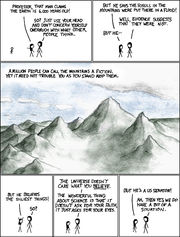
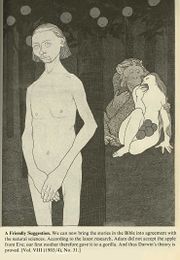

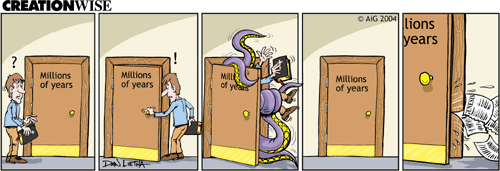

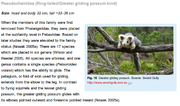
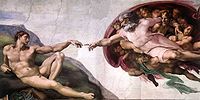

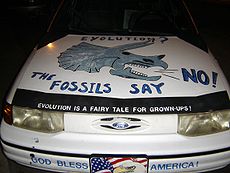


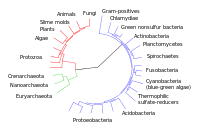
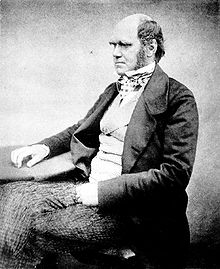

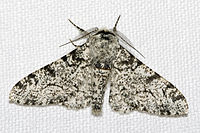
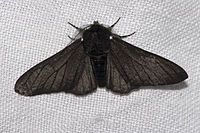


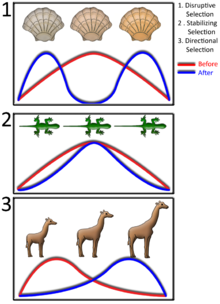
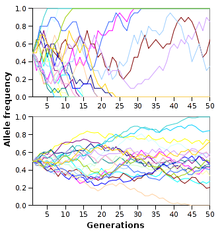

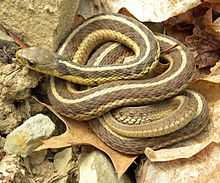
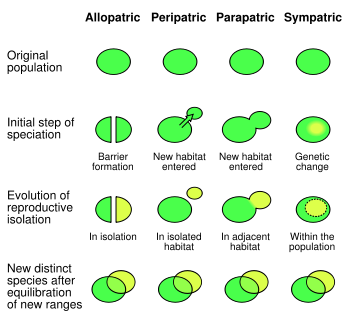

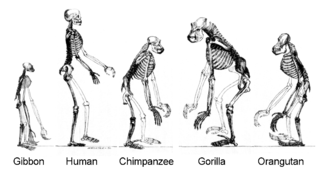
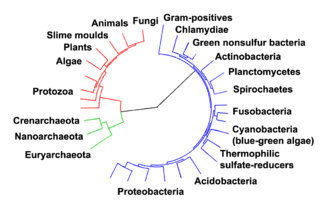
.jpg)